Mercedes Hernáez lovingly refers to her home on the outskirts of Buenos Aires as a garden with a roof. Indeed, the open and transparent space seems to blur its limits, paying tribute to the rich greenery that surrounds it. Designed by her partner, the architect and designer Alejandro Sticotti, the house is full of objects that tell a story. Crafts bought on various trips to North Argentina, photographs signed by artist friends and books that evoke memories of past times – Mercedes refers to them as “treasures of everyday life”.
Sitting down in the kitchen, drinking coffee and talking about the process of building their home brings up larger conversations: the story of the couple’s relationship and of Buenos Aires’ unique character. Alejandro tells us about his love of wood, which paired with a penchant for clean lines, characterizes the furniture he designs and produces in the busy Palermo neighbourhood. Mercedes works a few steps away from him. Heading to the city center by car means crossing the urban jungle, past construction sites and eight-lane highways, before arriving at her charming studio and shop, Mono. Besides selling handpicked goods from independent designers, Mercedes creates mini guides of Buenos Aires and a very special collection of notebooks. Sitting on a vine-covered patio, the day is spent discussing the power of collaborations, a warehouse full of old wallpapers and her dreams of discovering hidden projects in a city in a continuous state of change.
This story is featured in our second book, Freunde von Freunden: Friends, order within Germany here, or find the book internationally at selected retailers.
This portrait is part of our ongoing collaboration with ZEIT Online who presents a special curation of our pictures on their site.
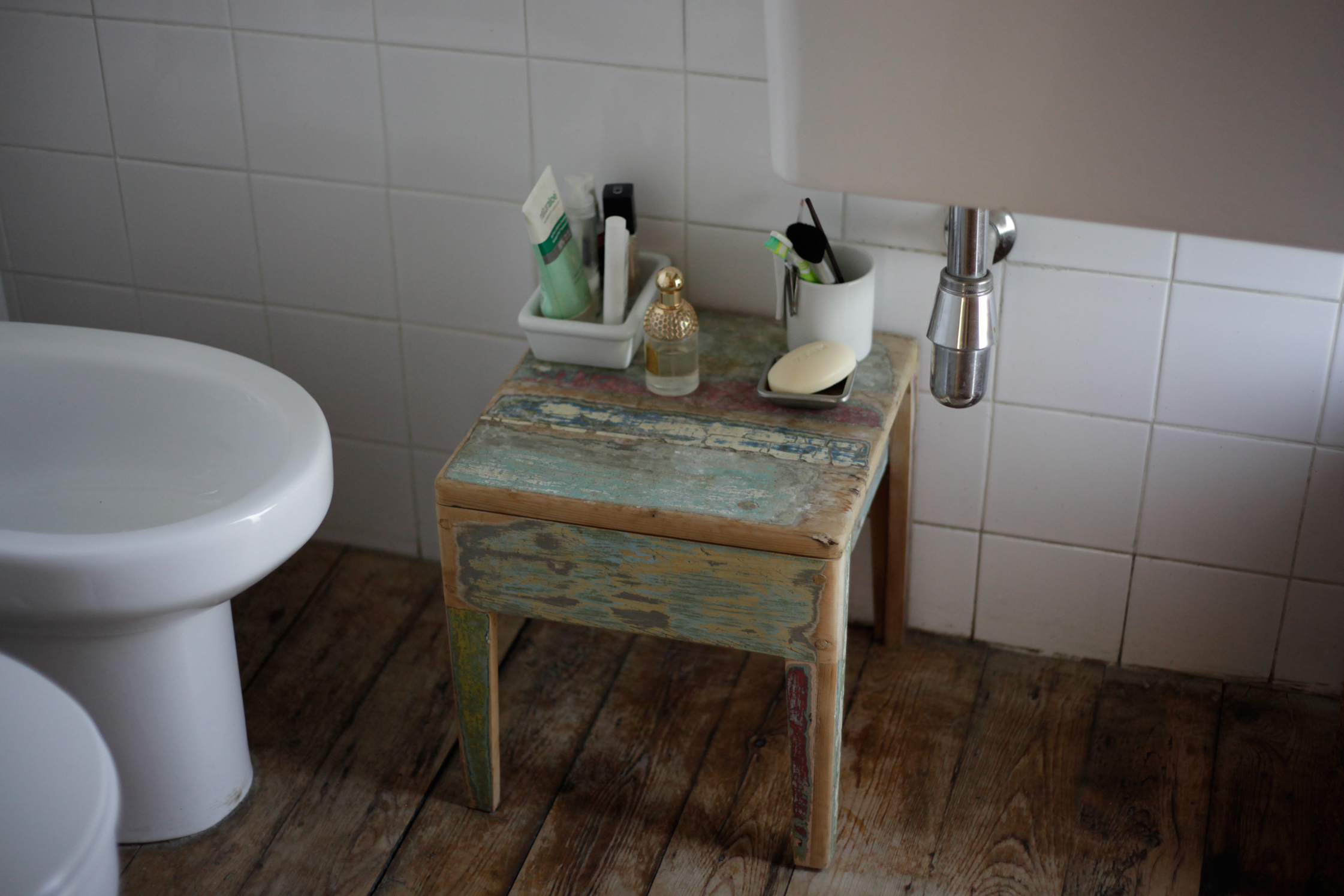
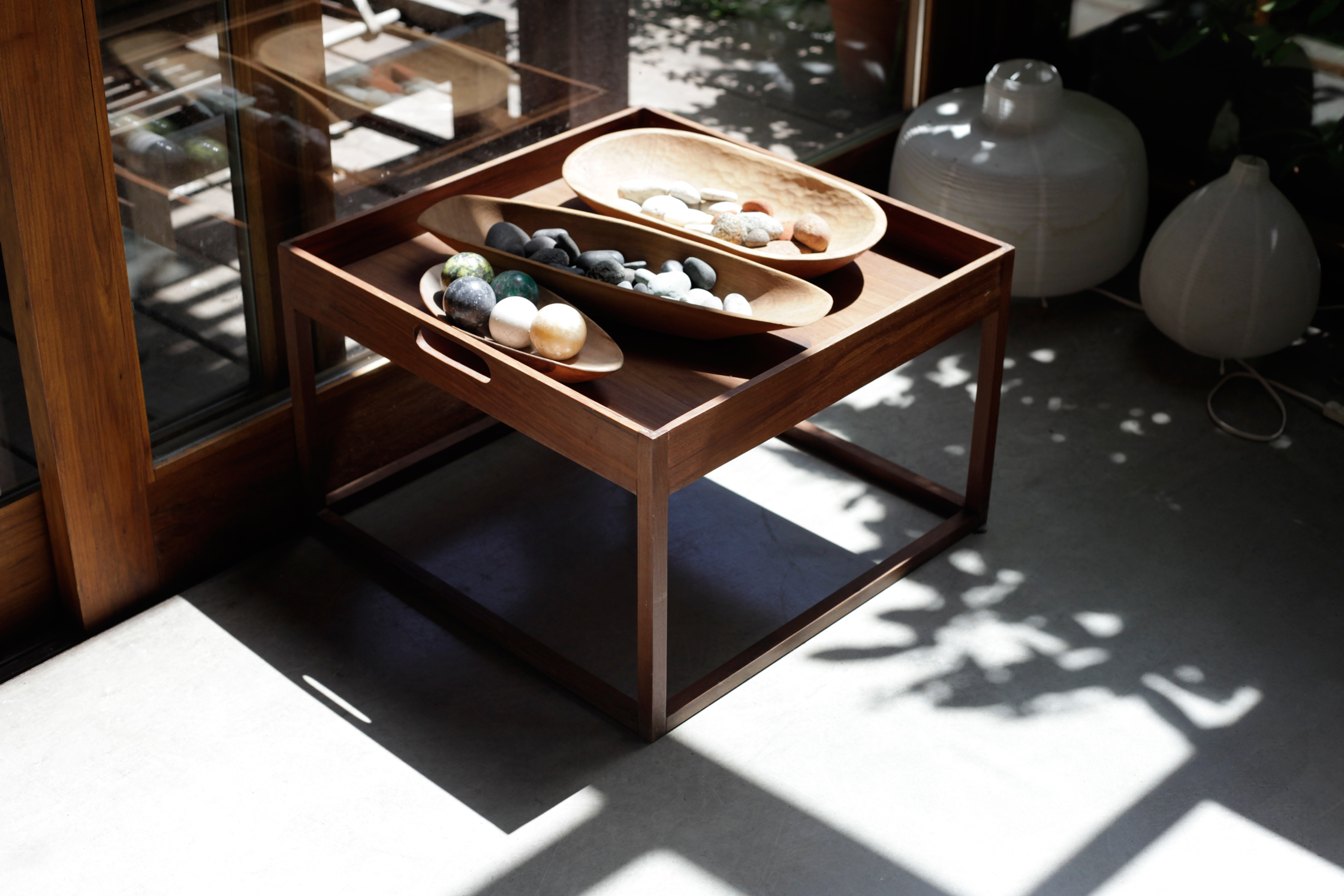
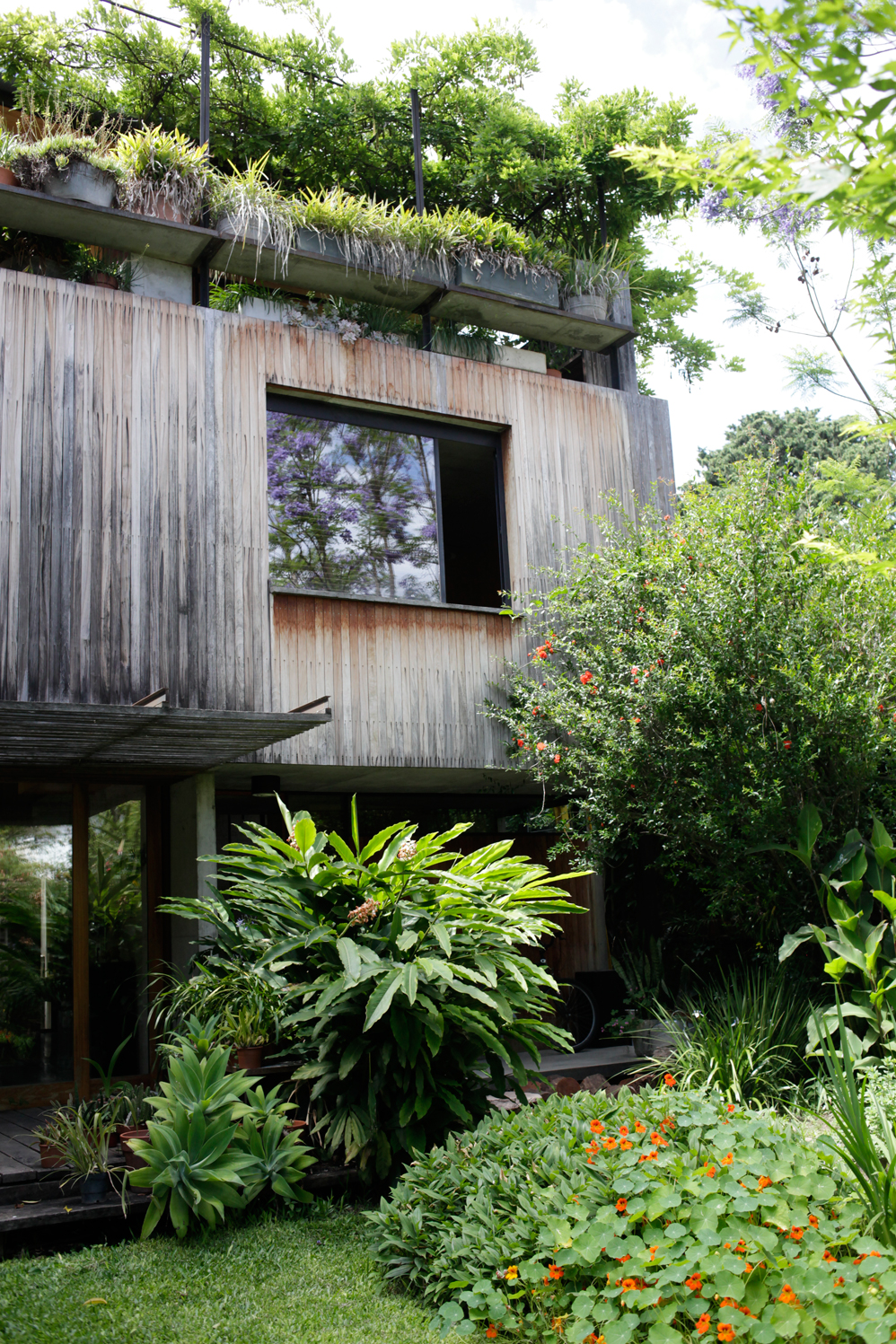
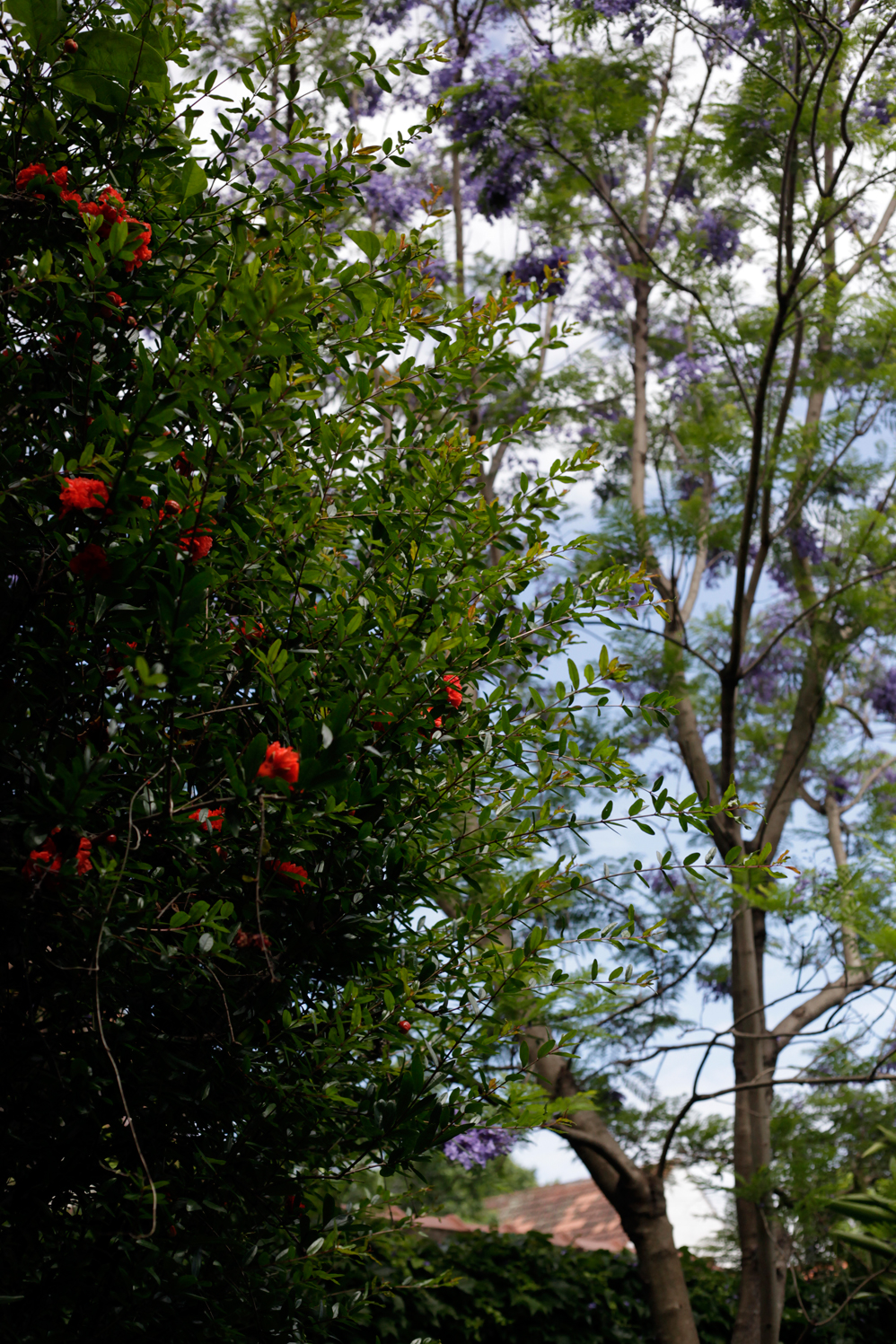
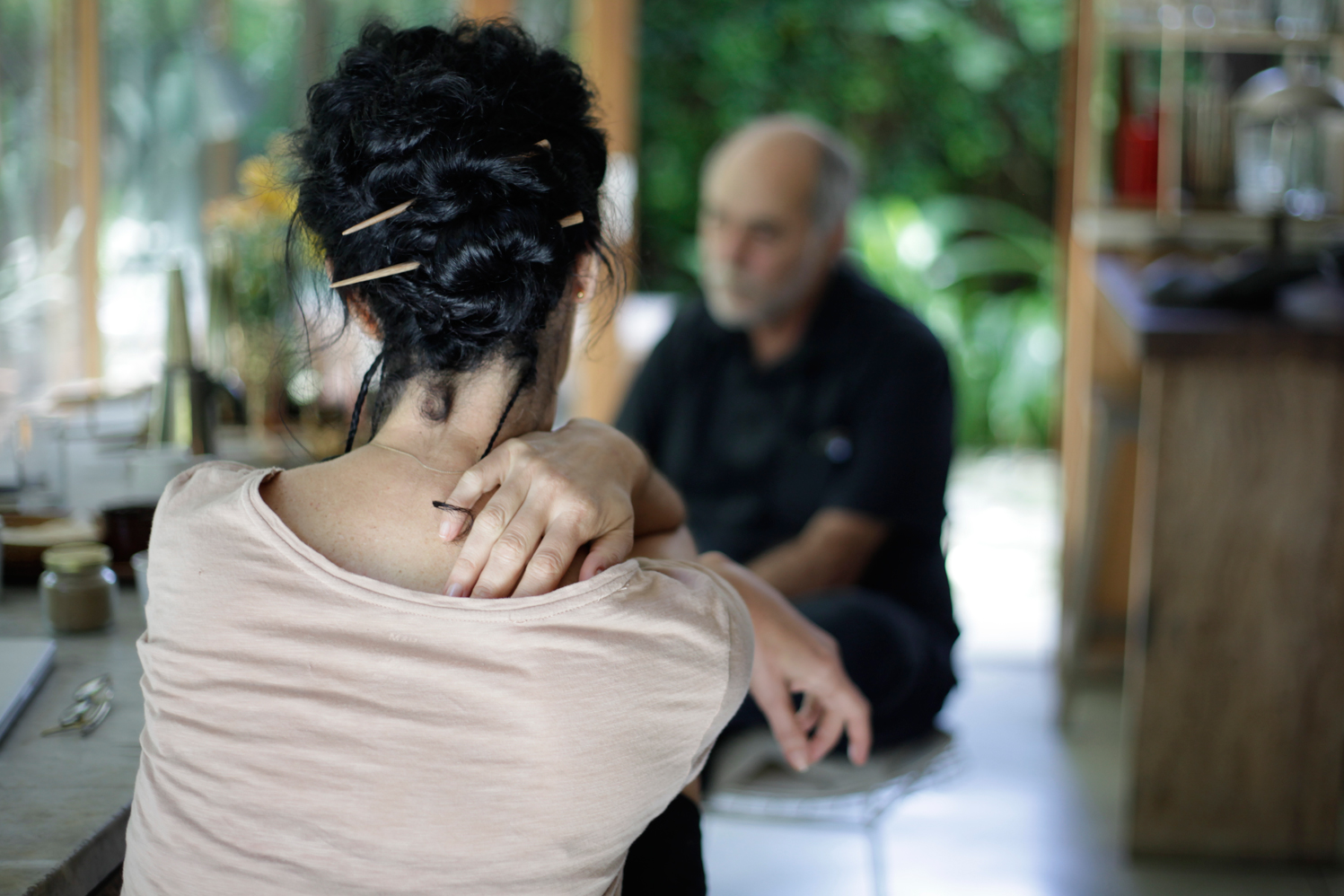
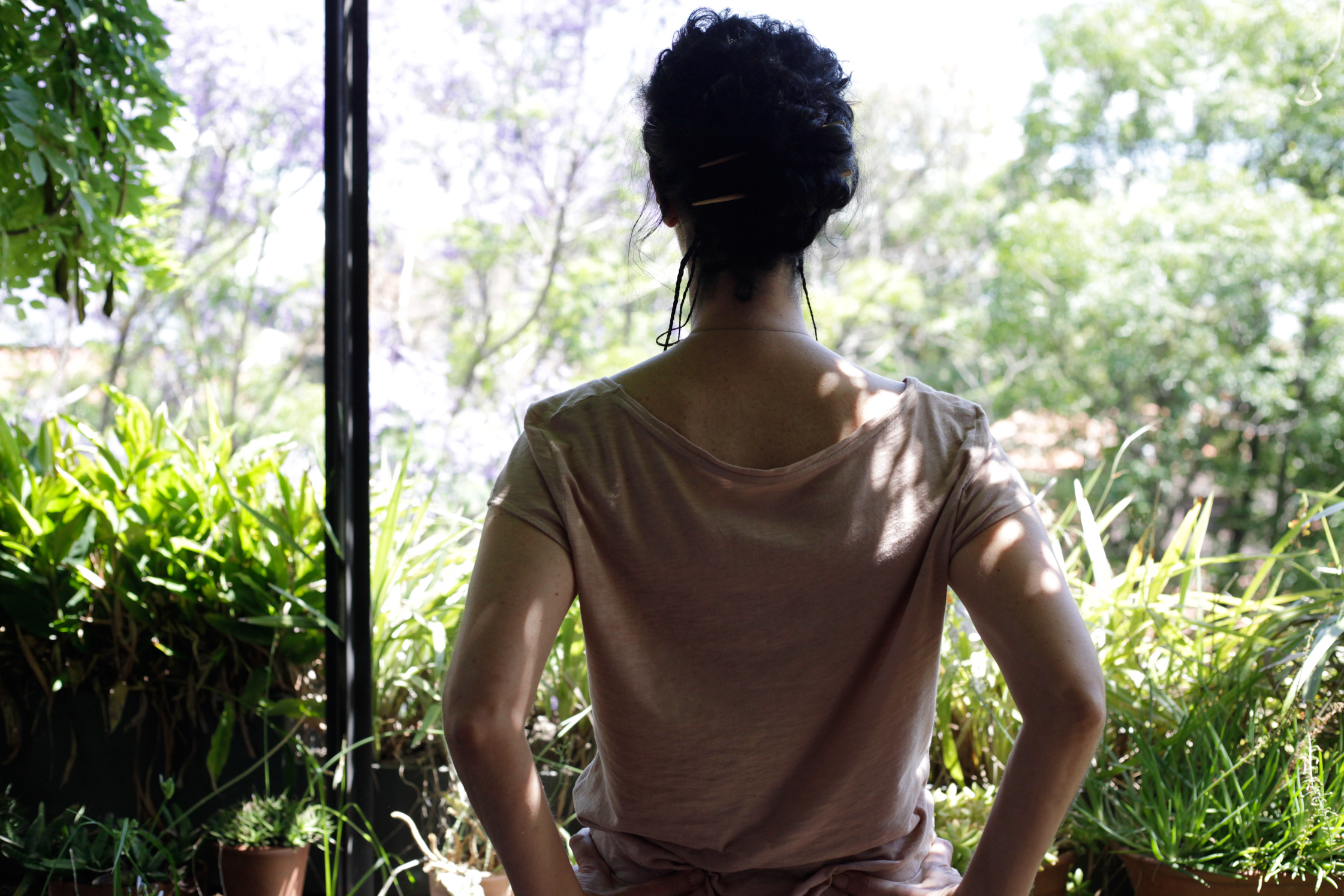
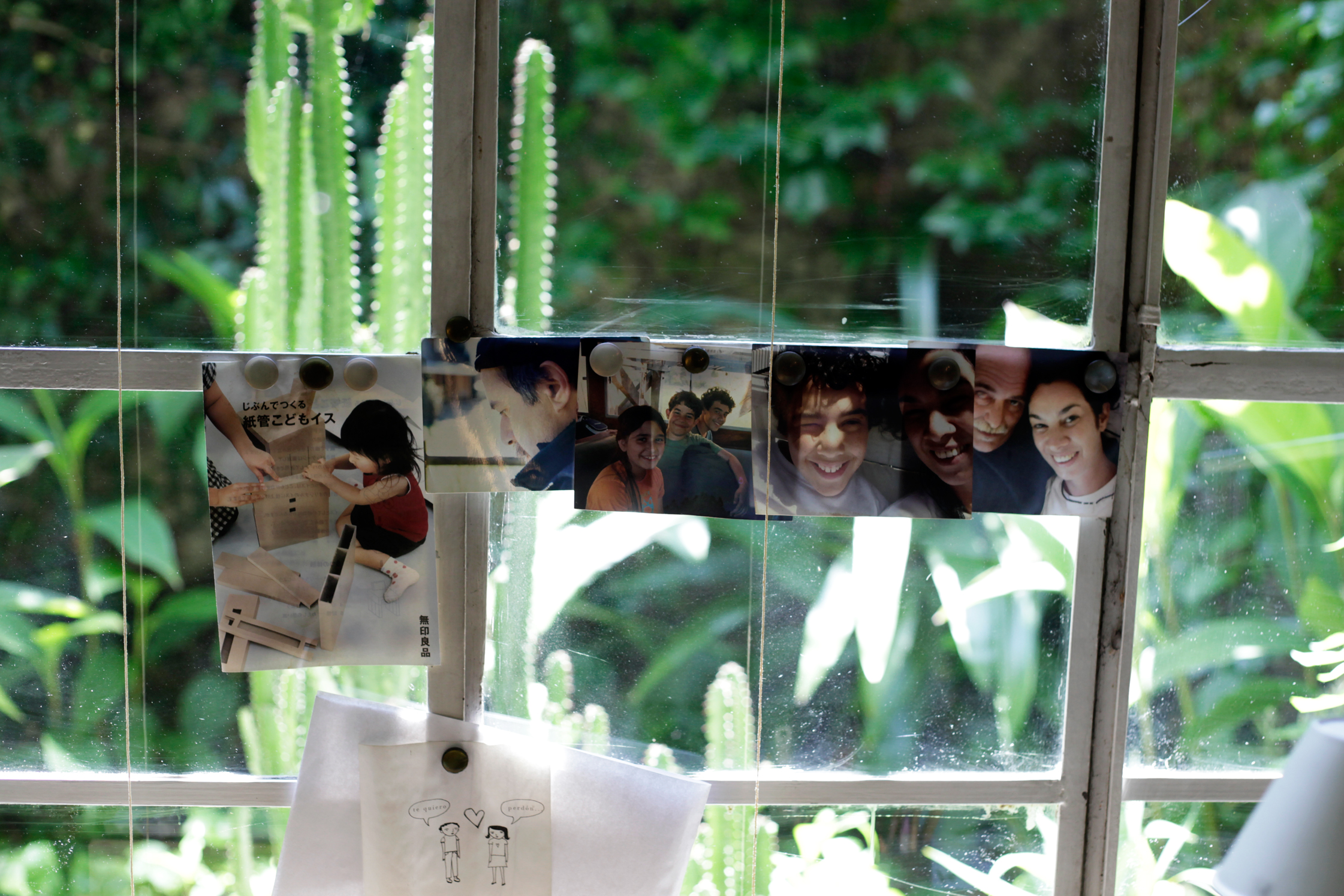
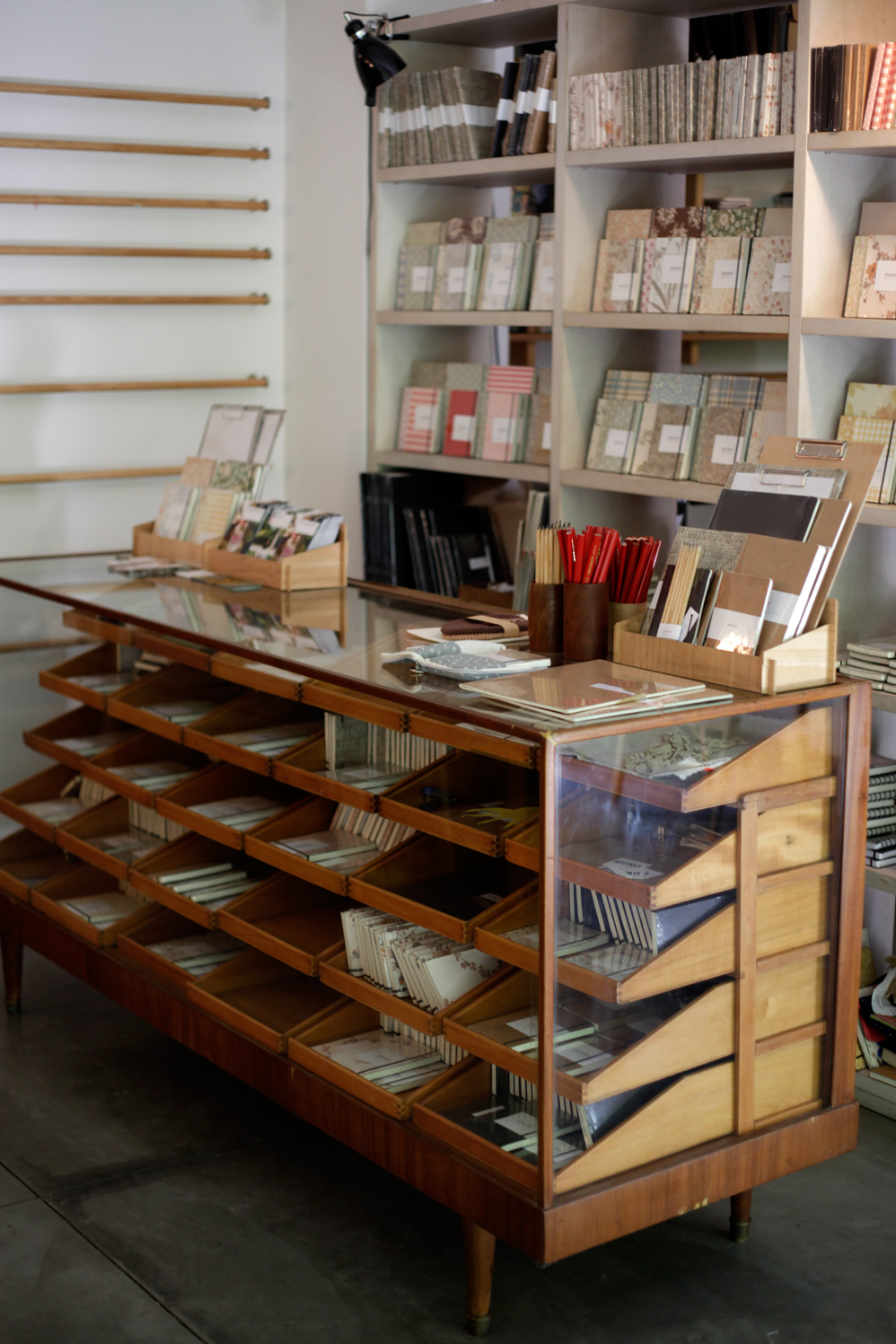
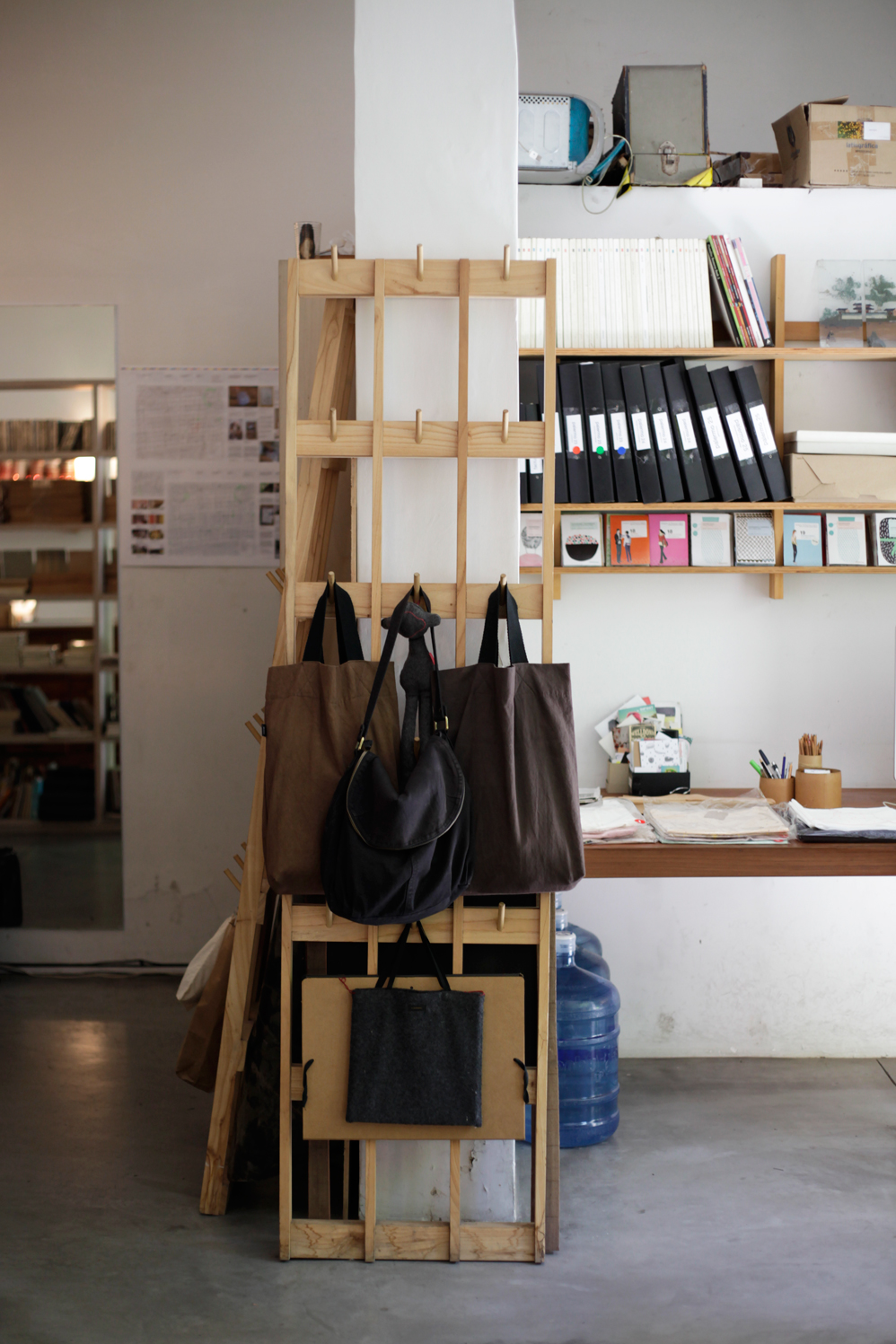
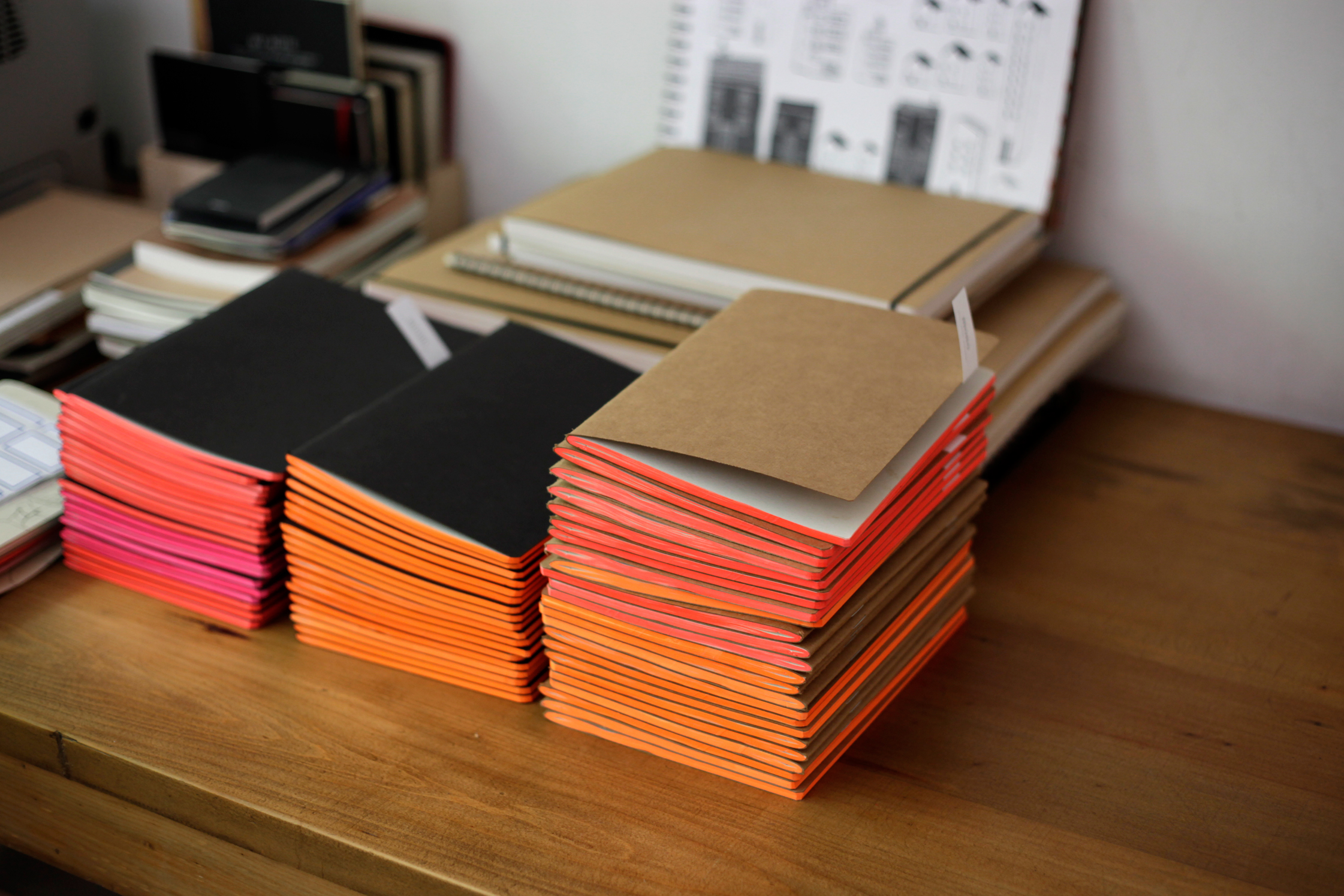
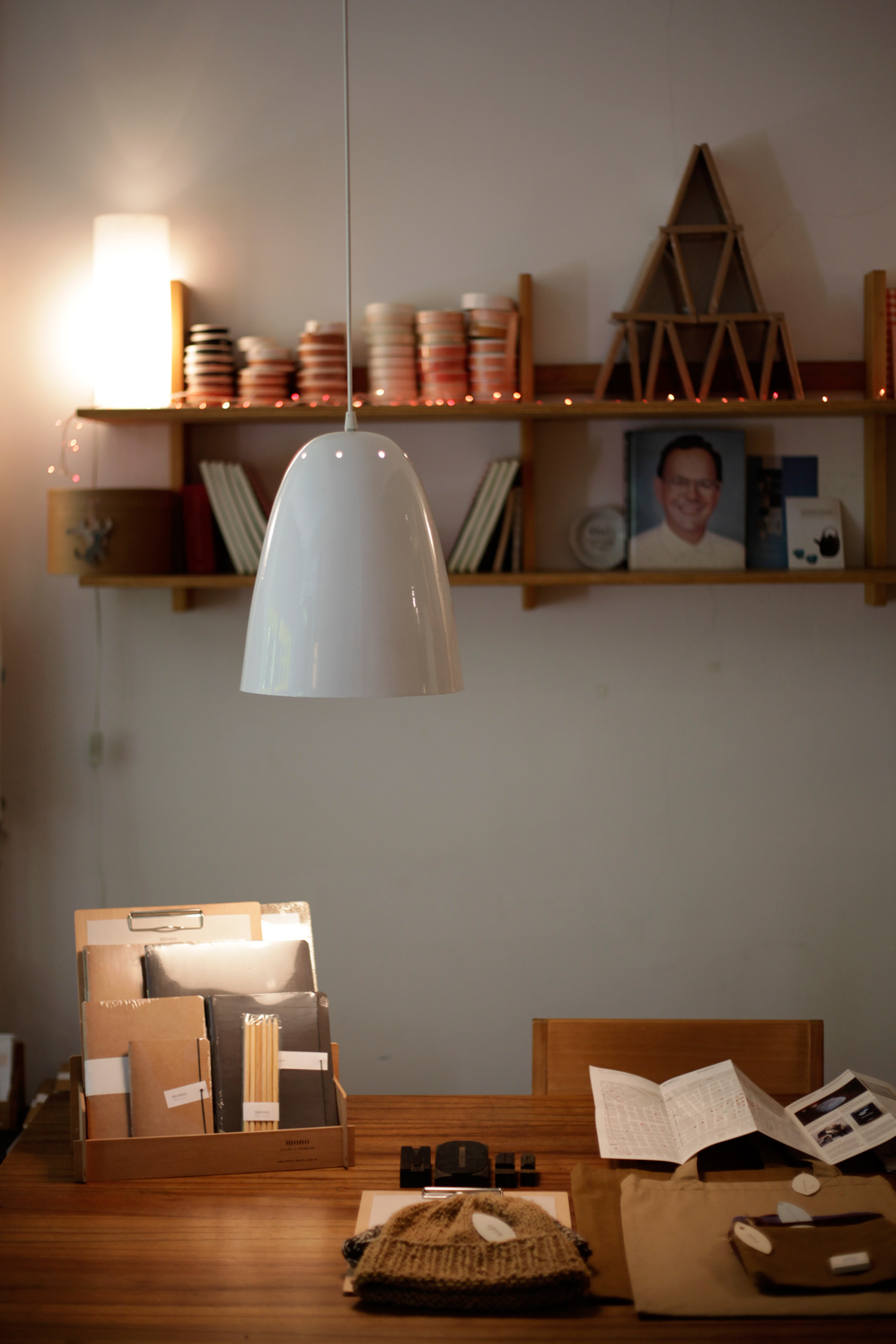
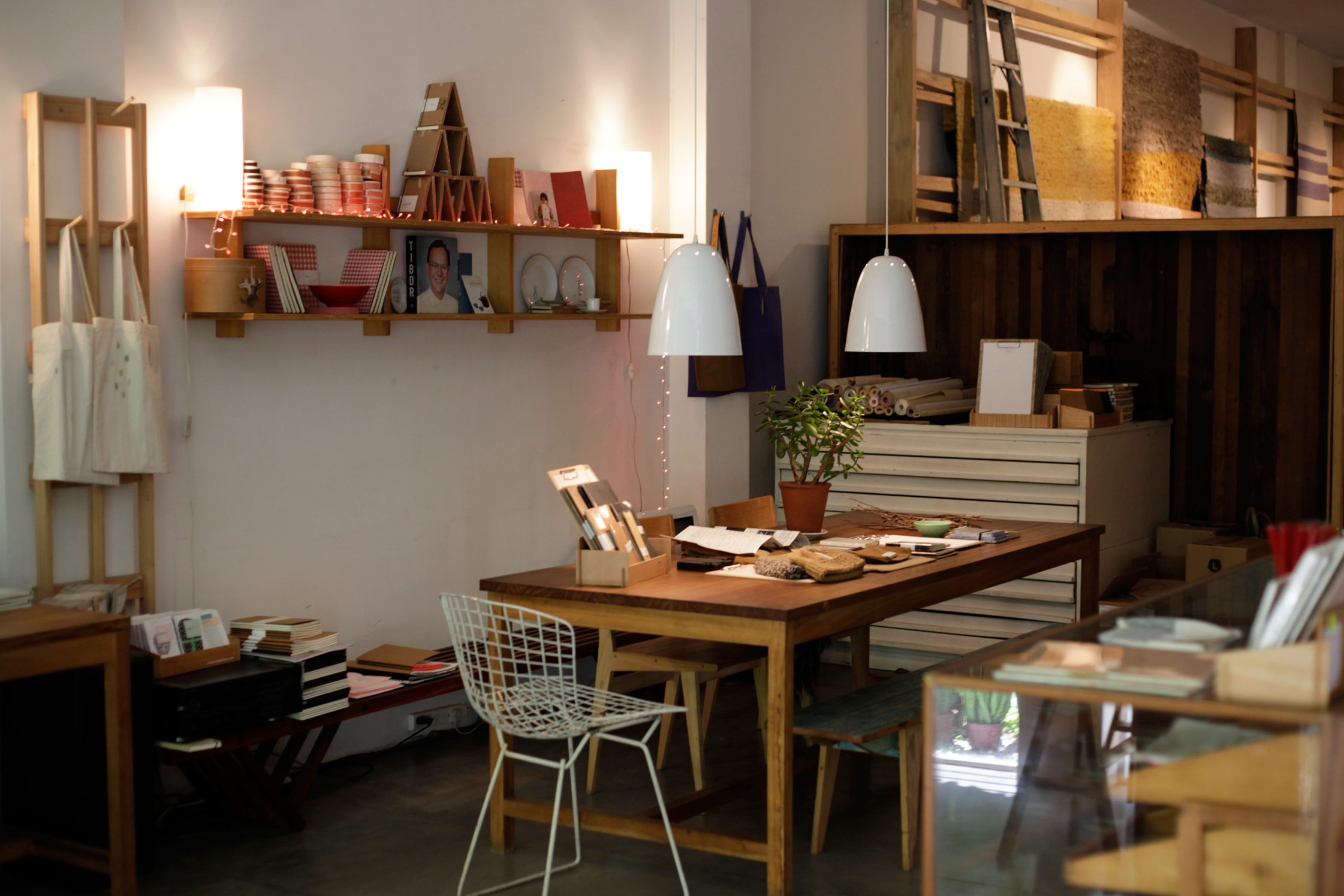
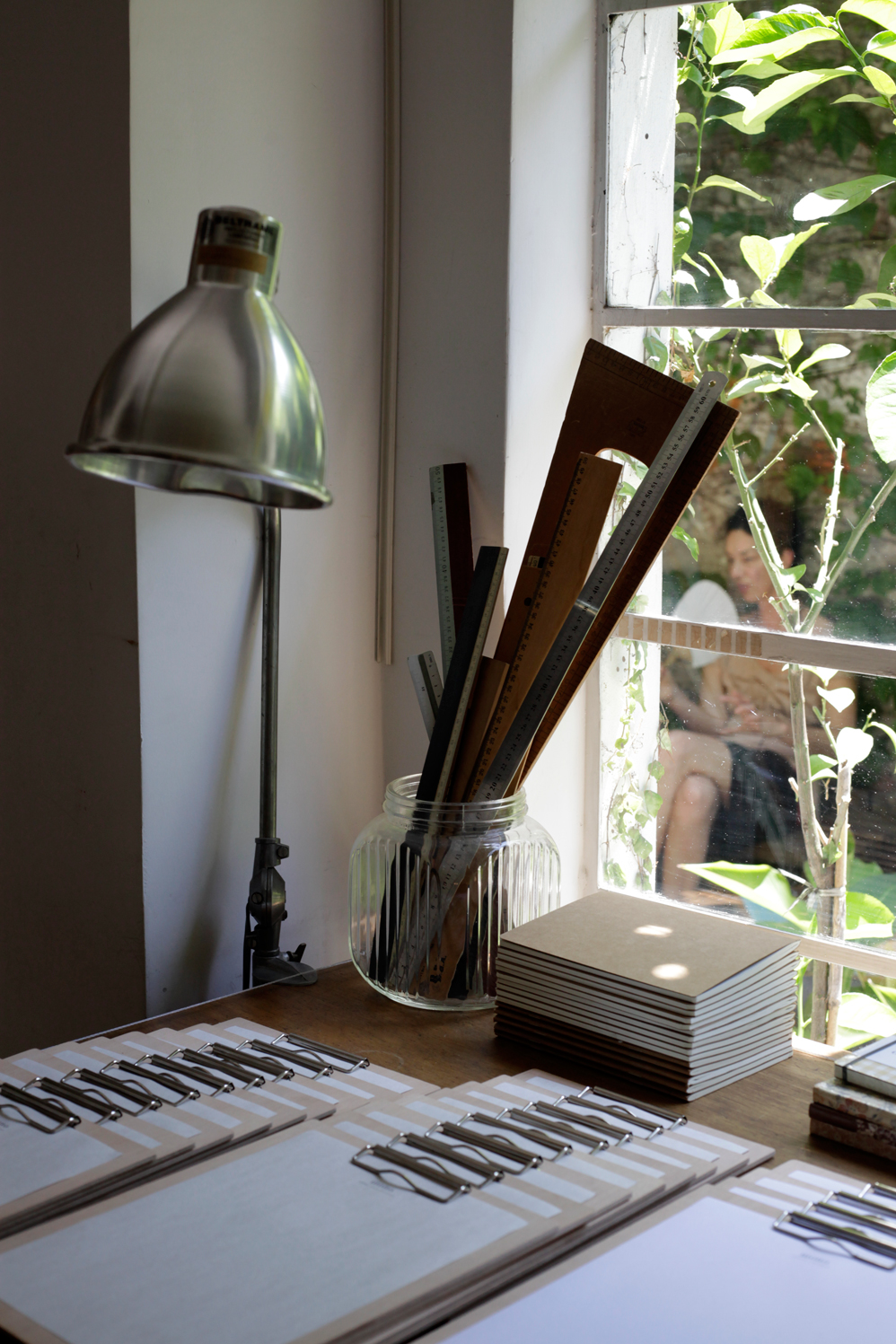
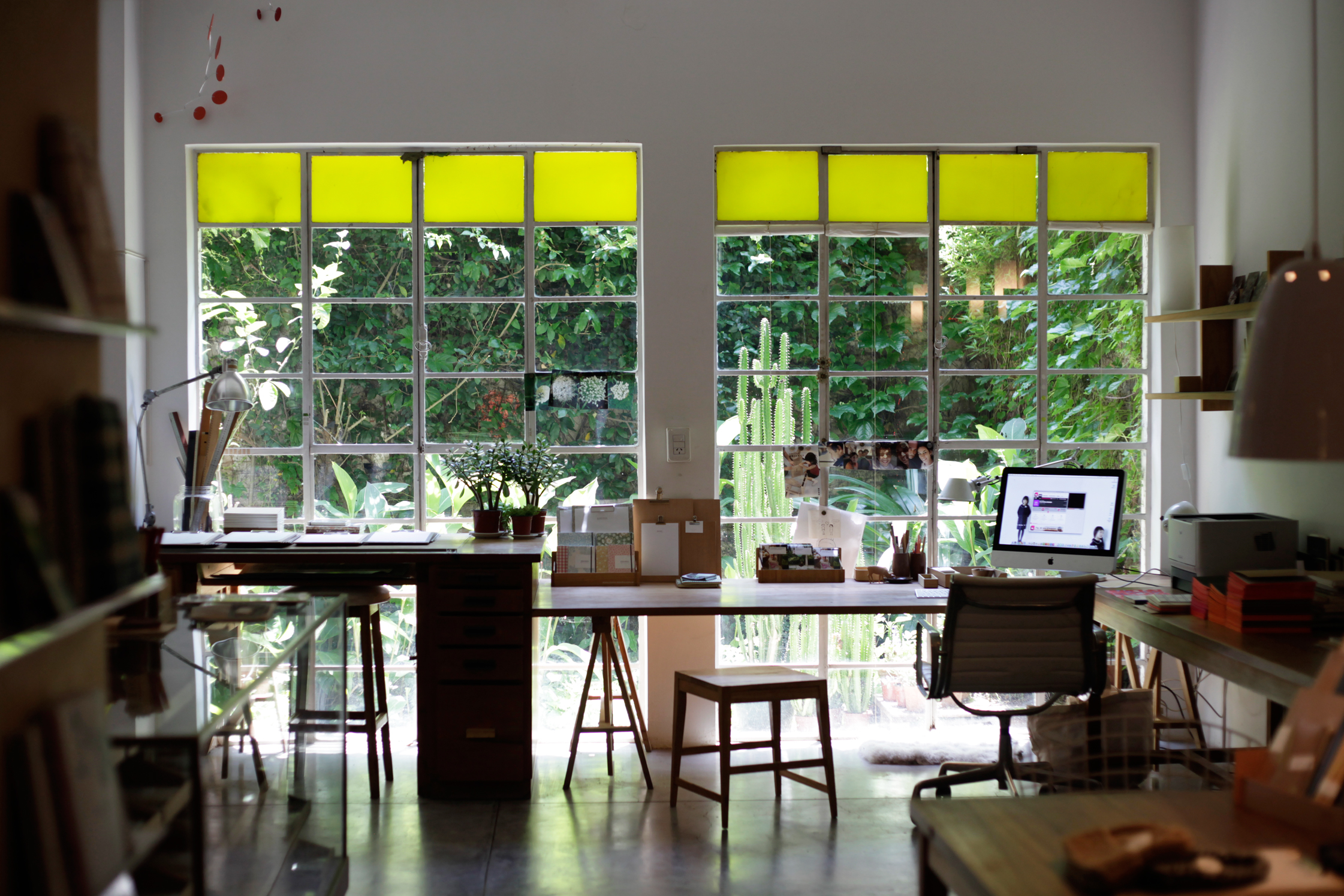
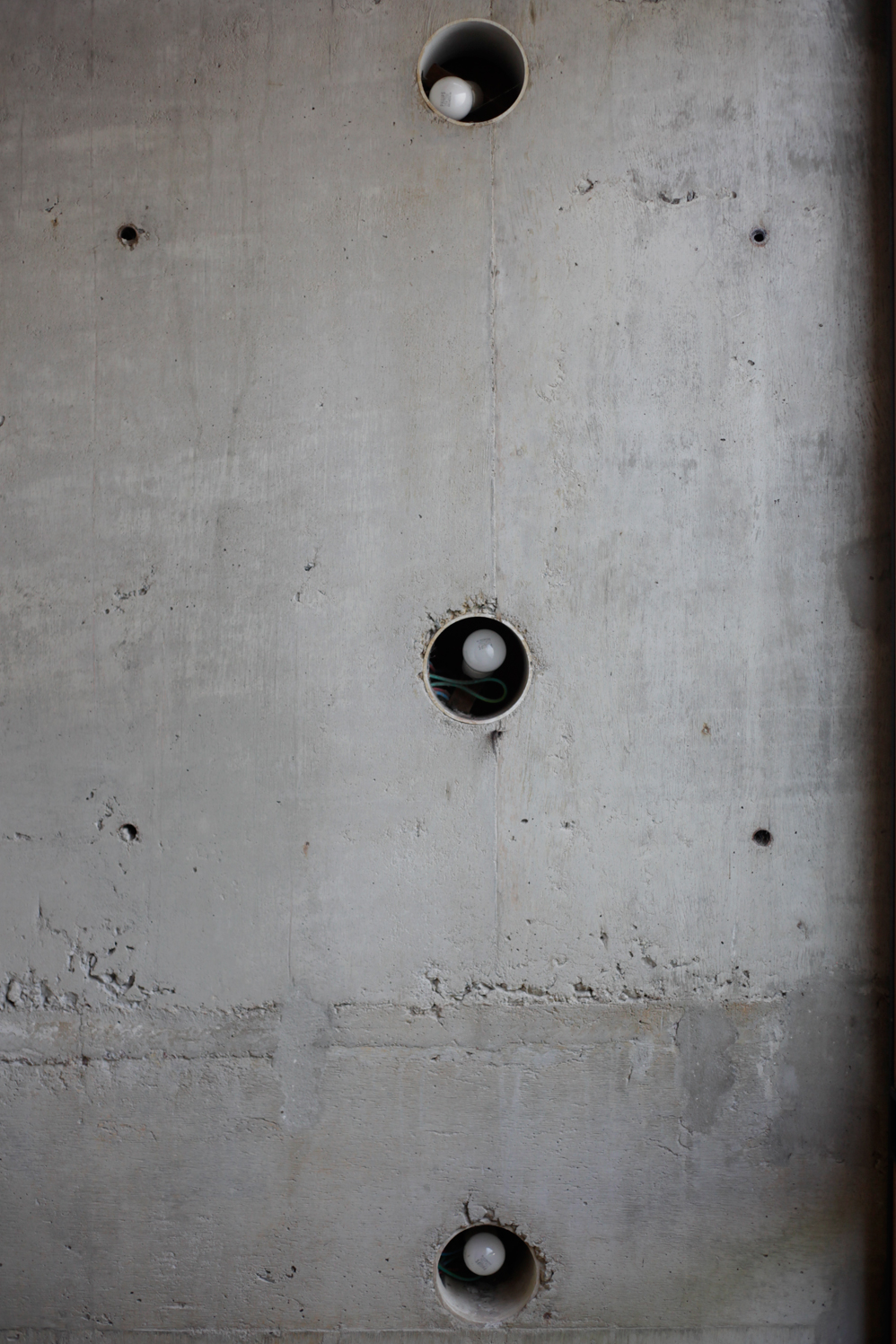
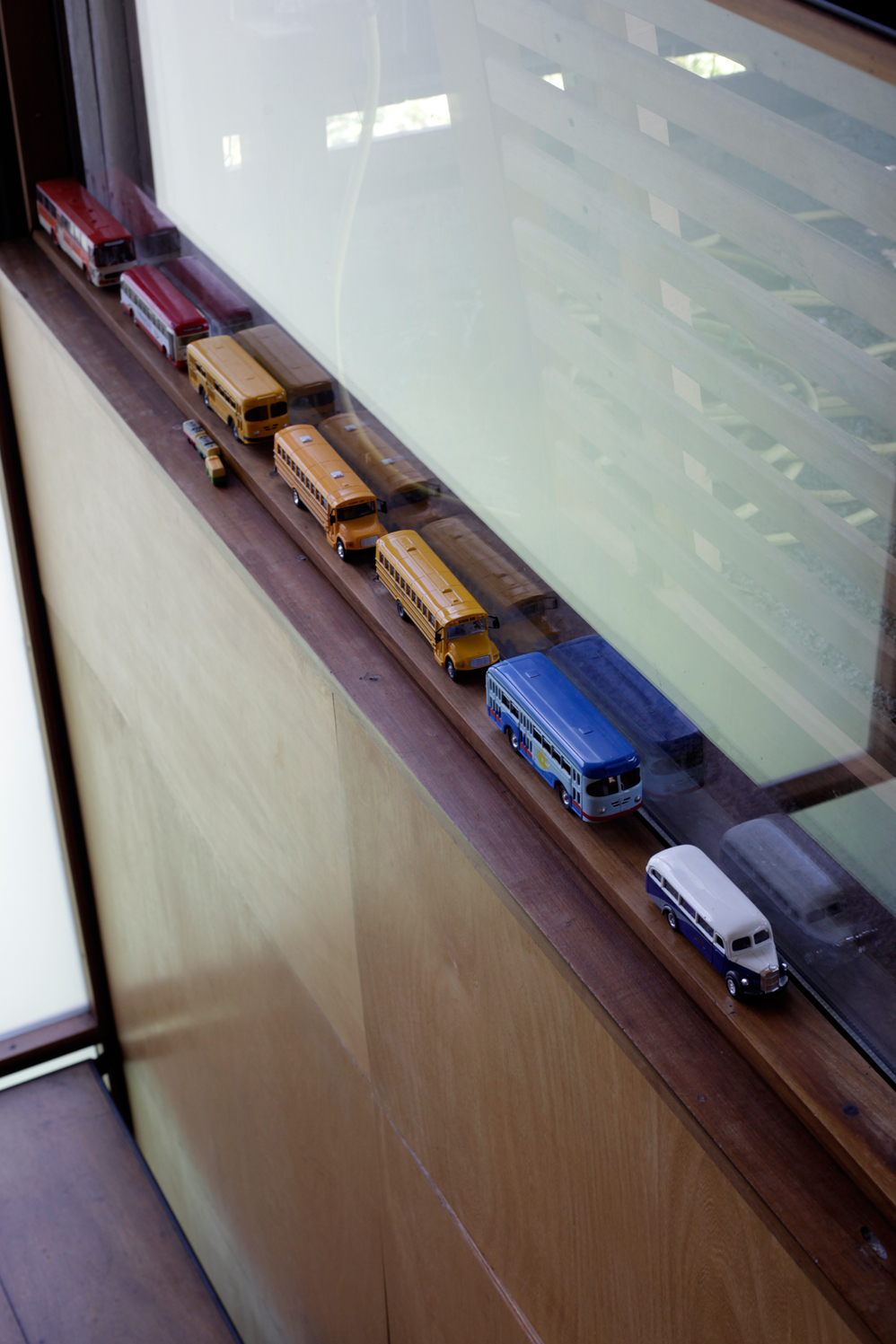
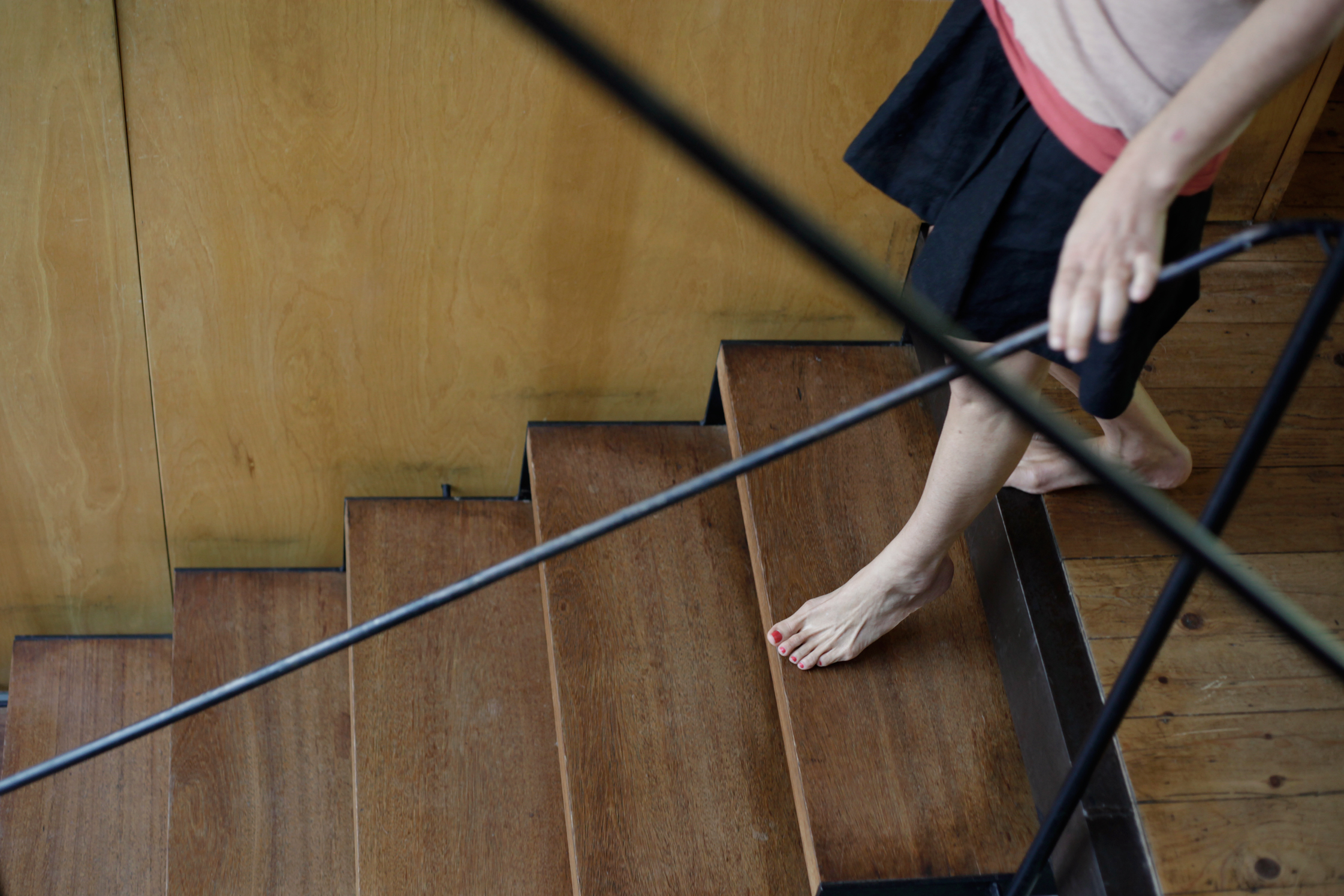
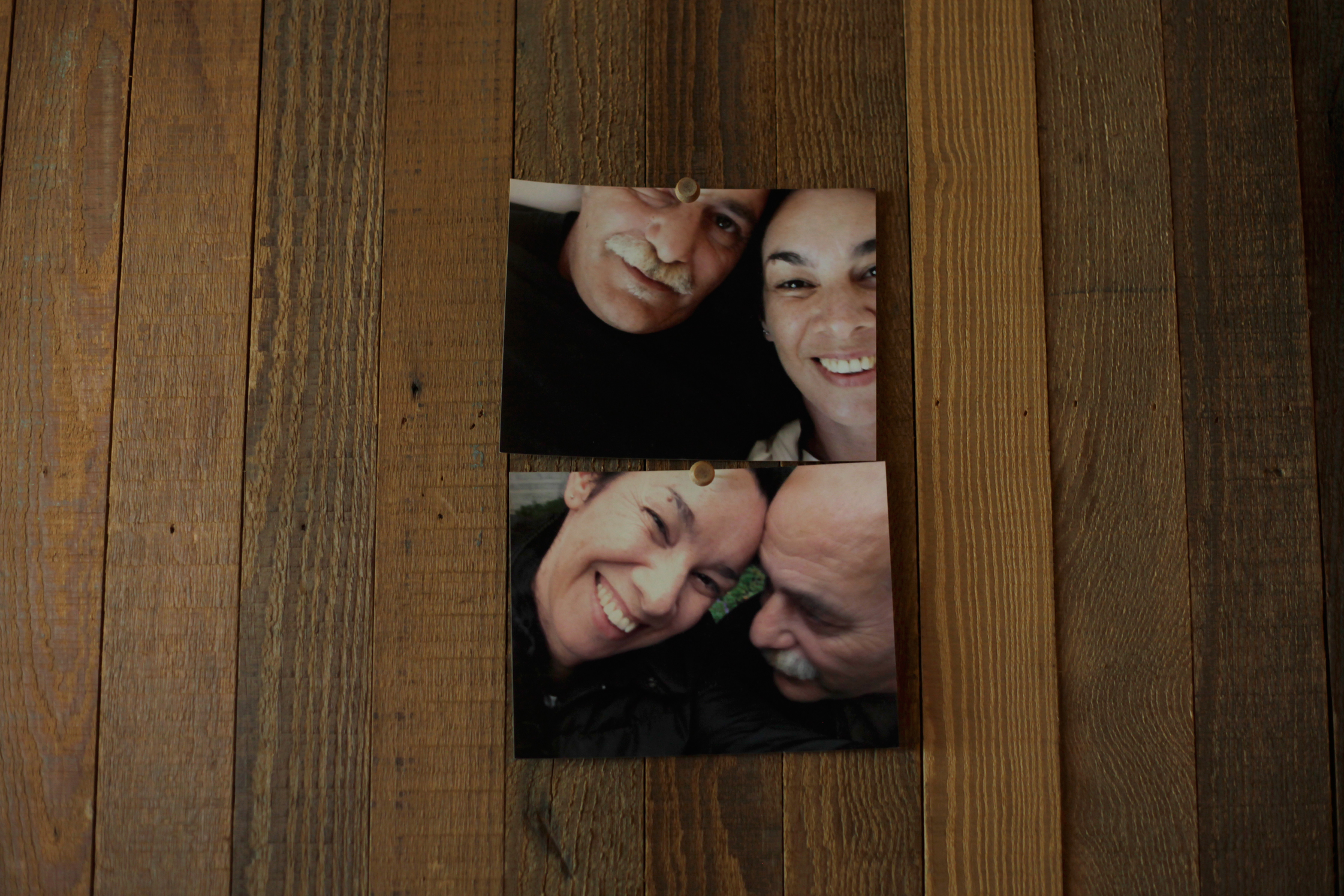
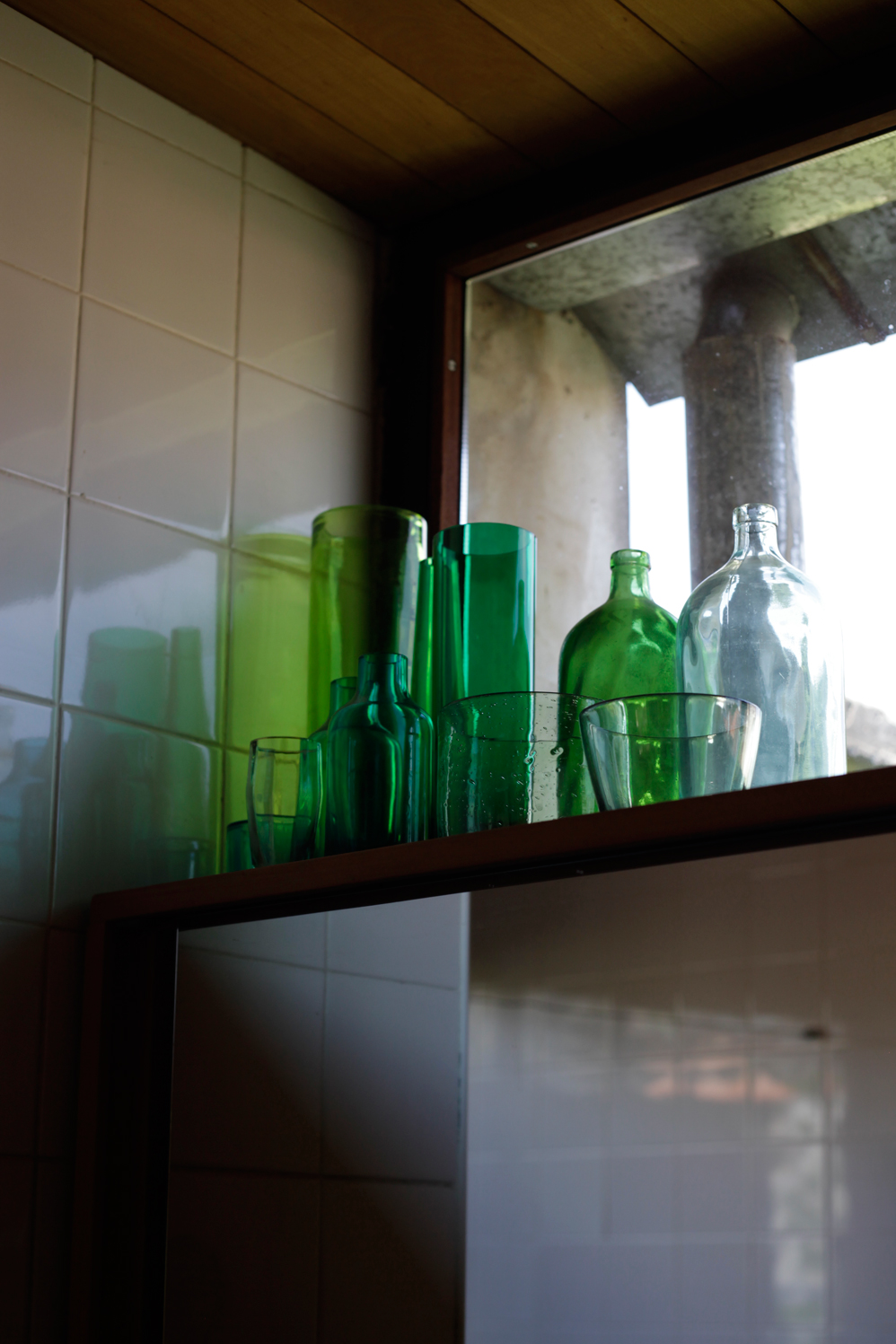
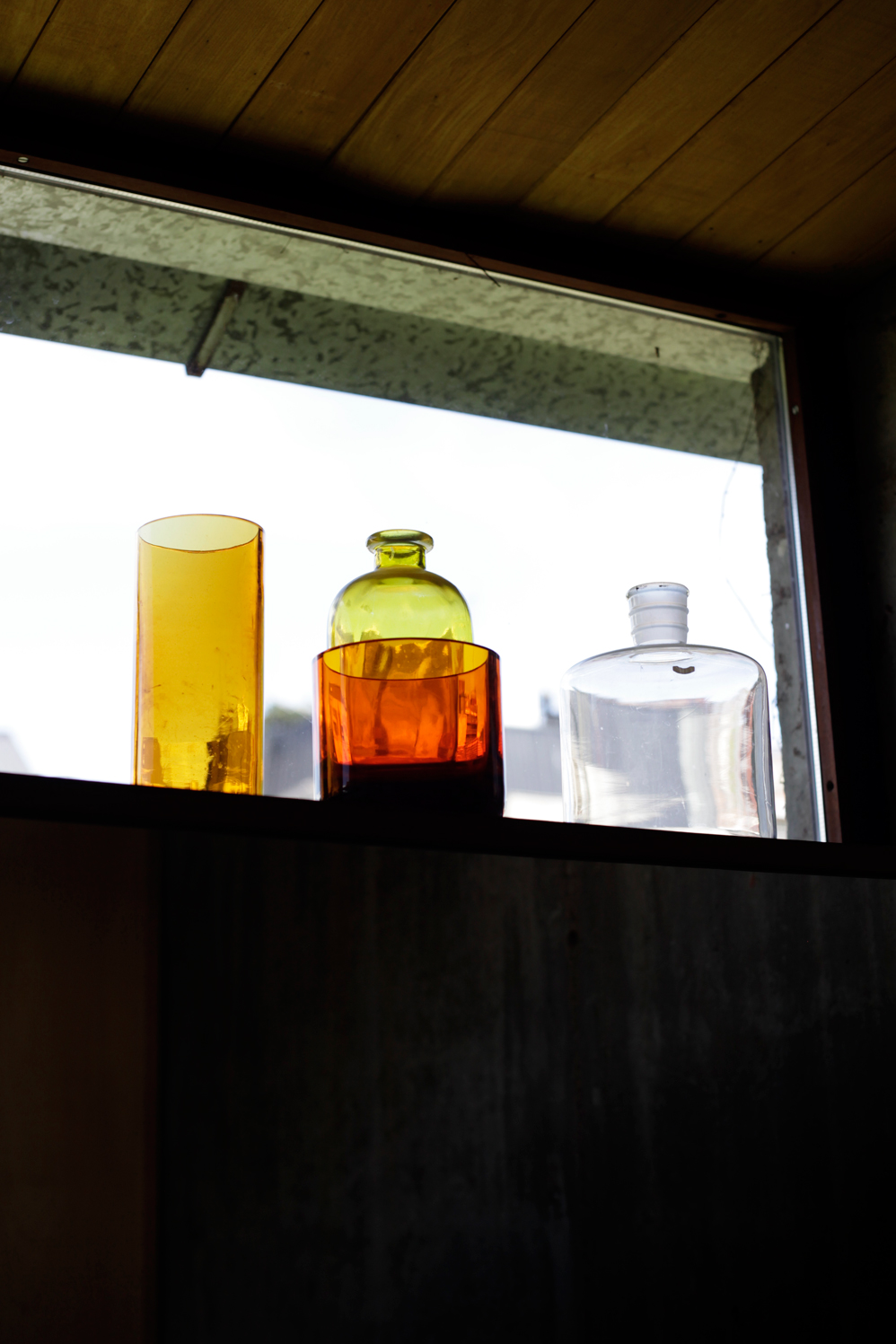
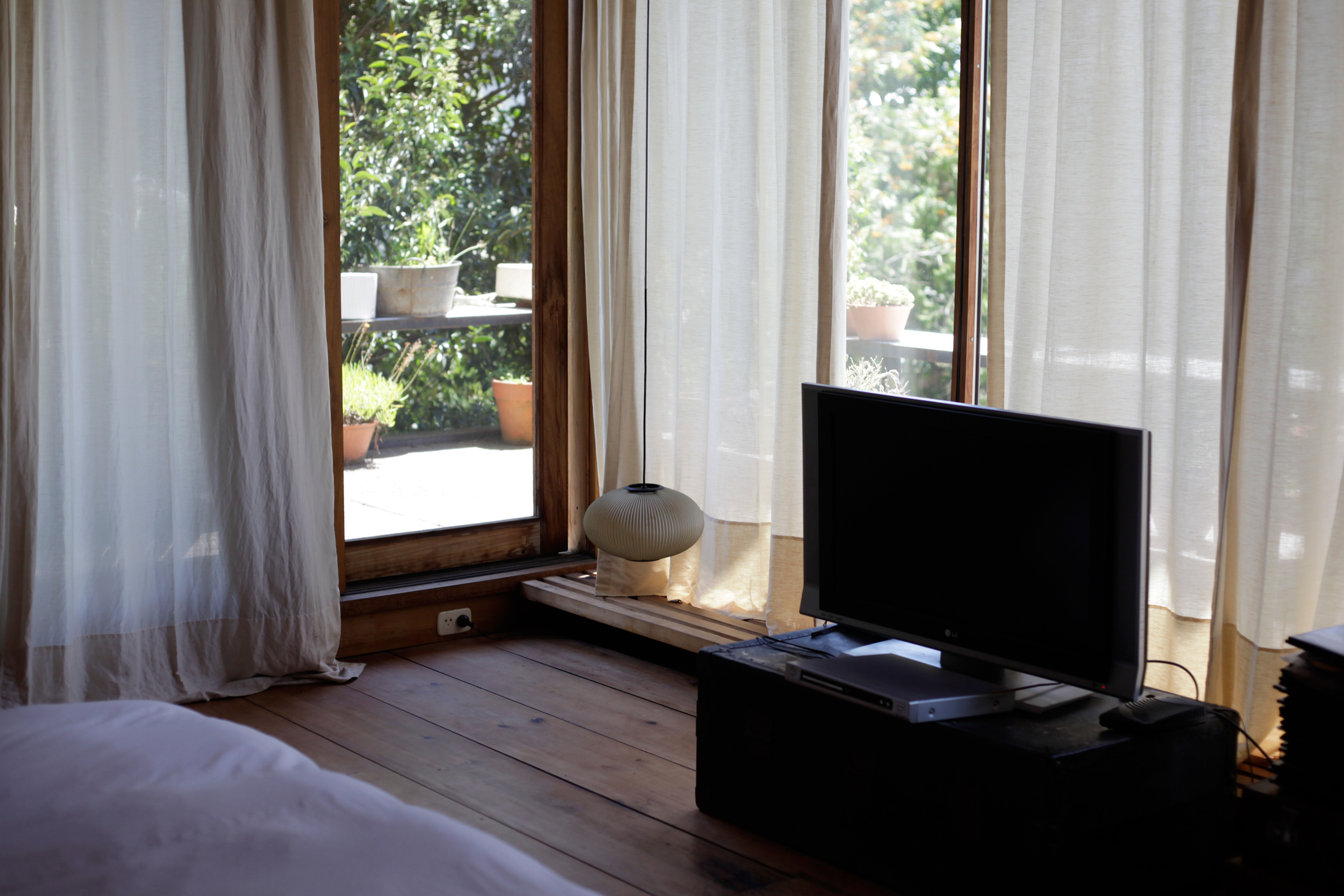
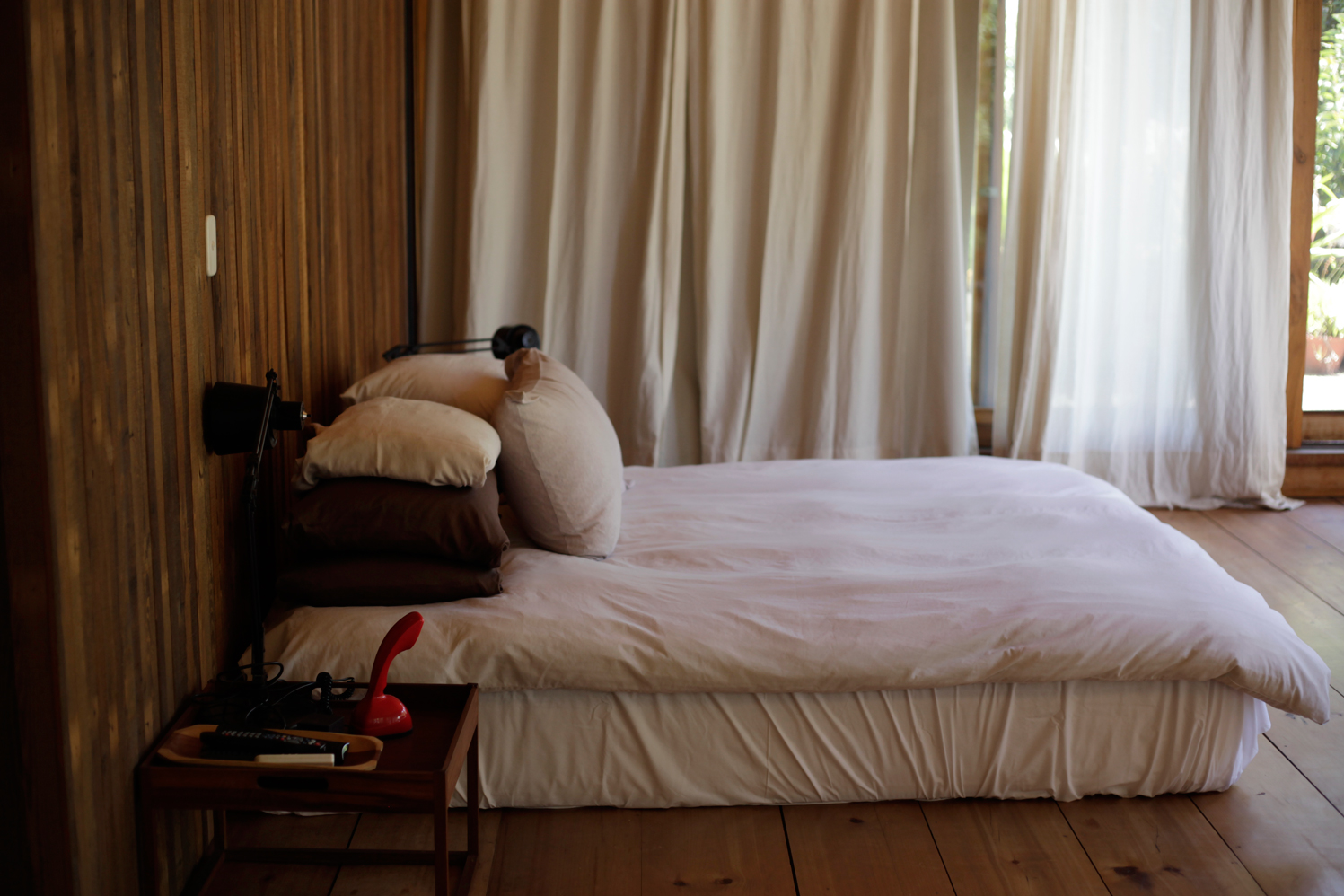
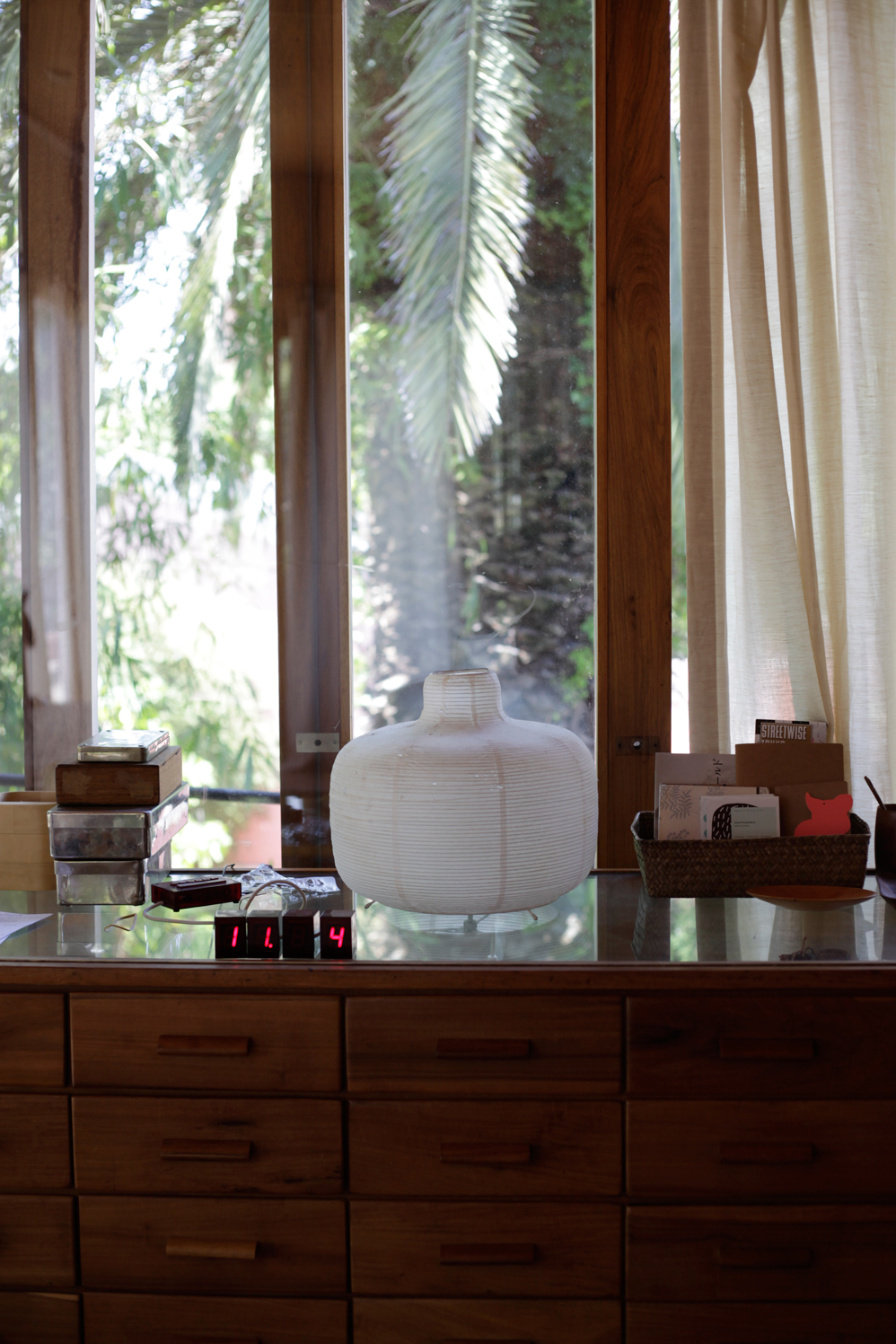
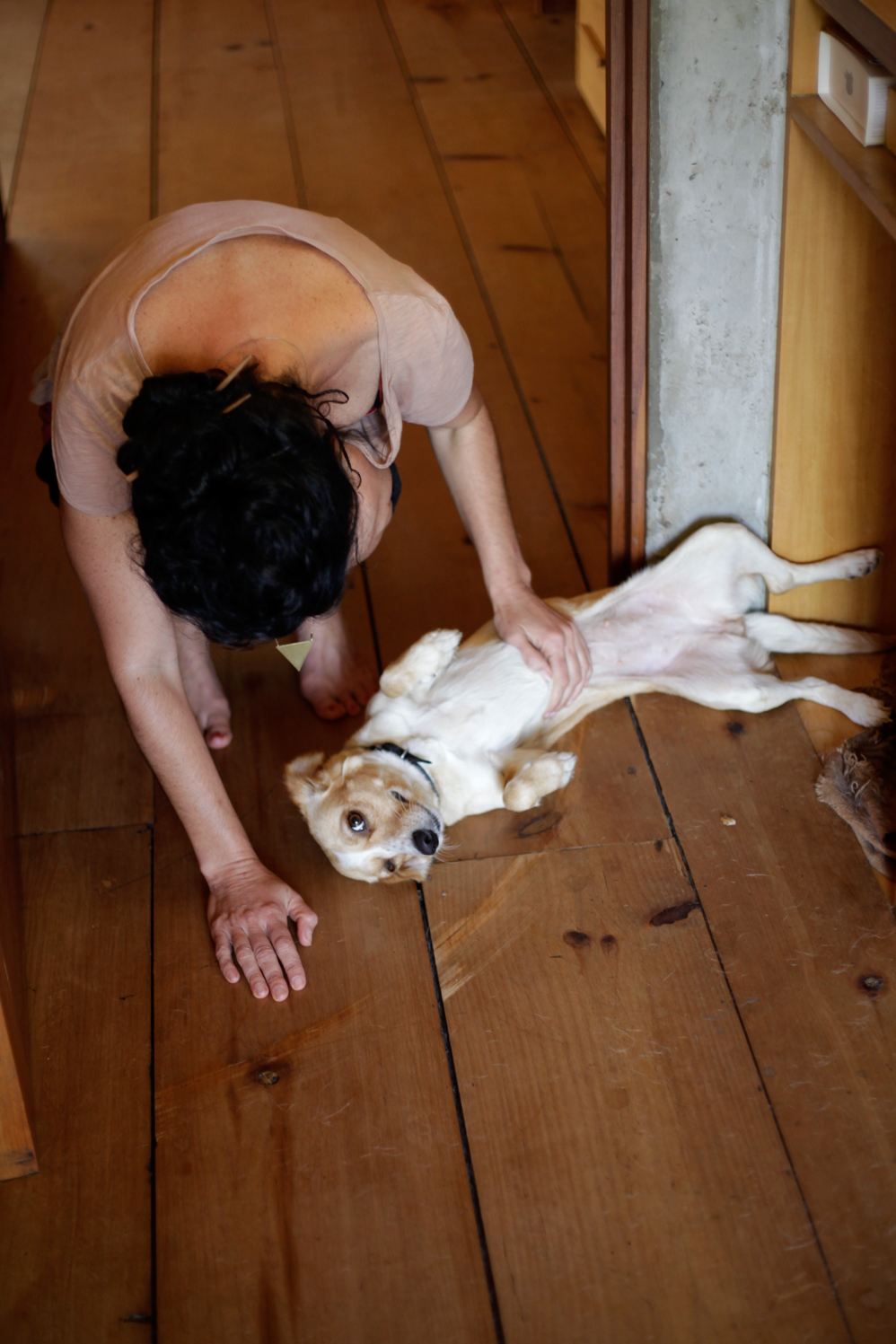
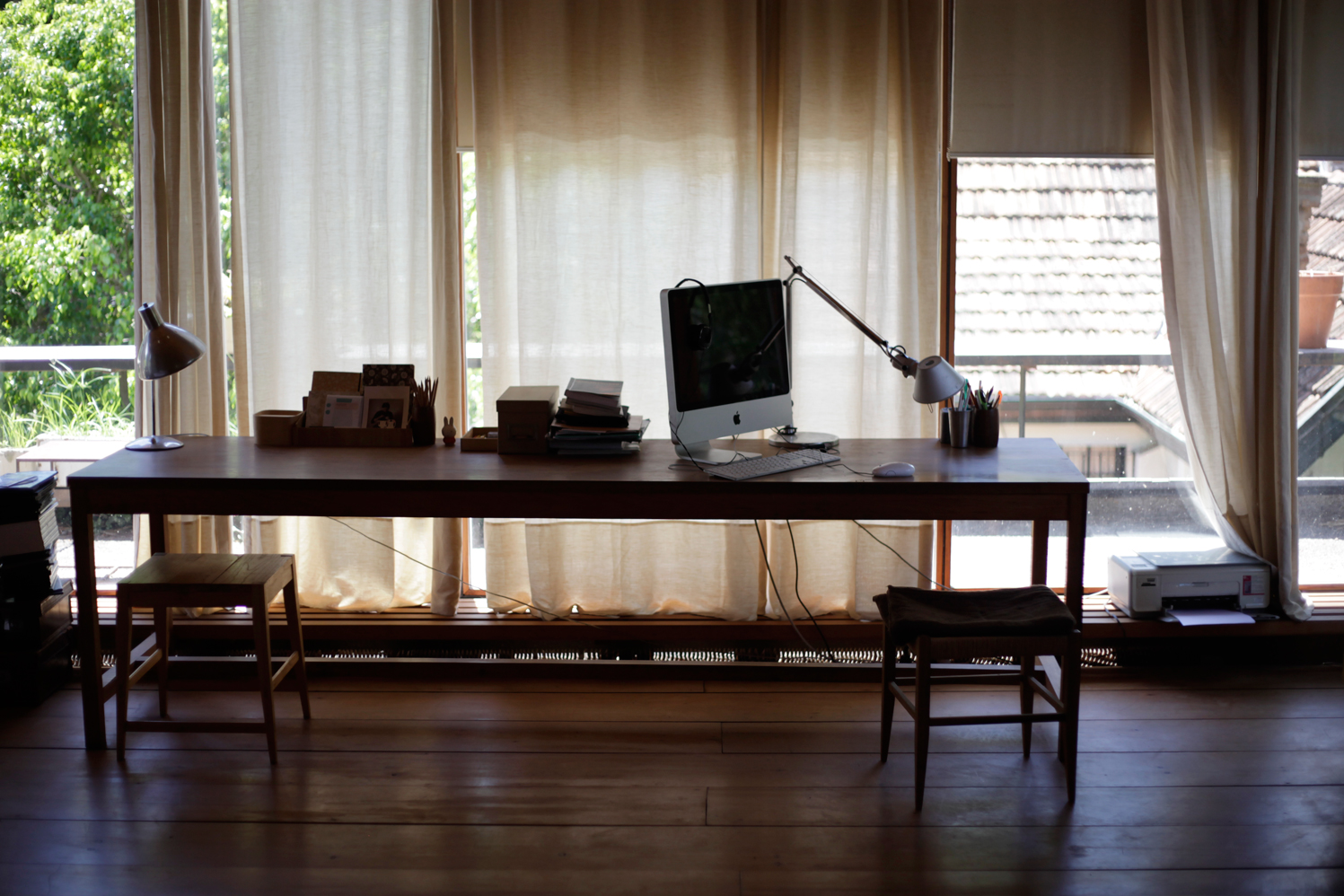
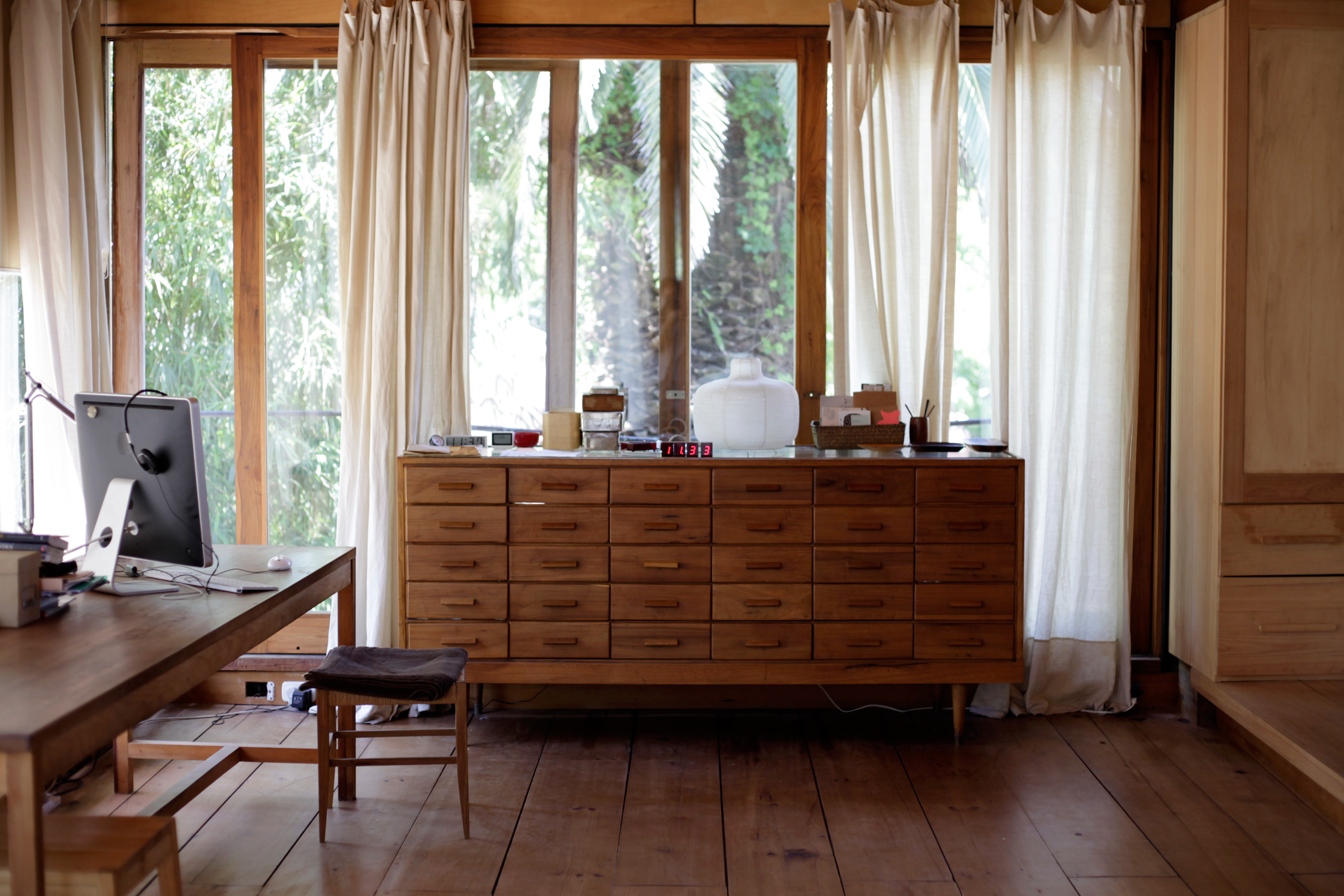
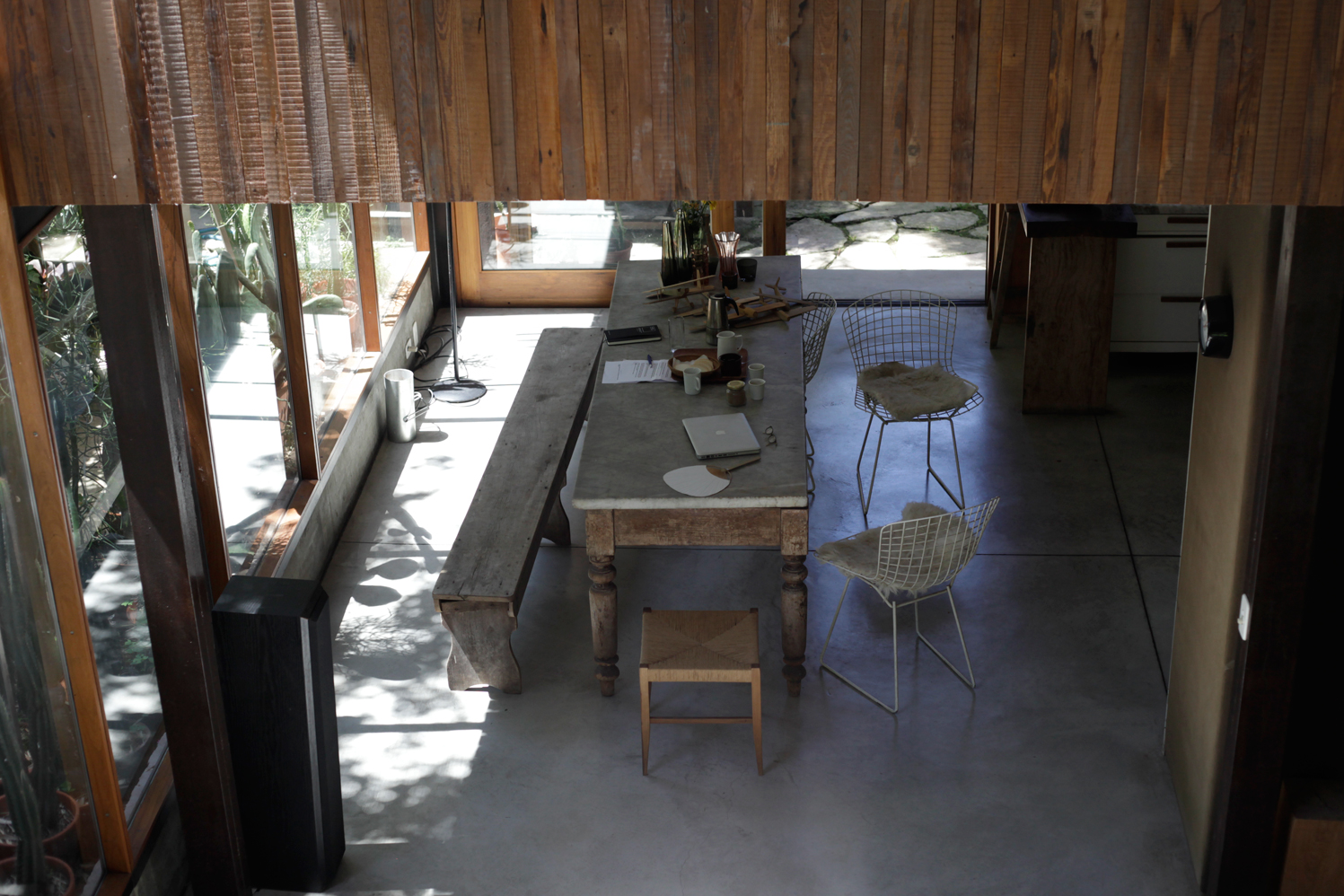
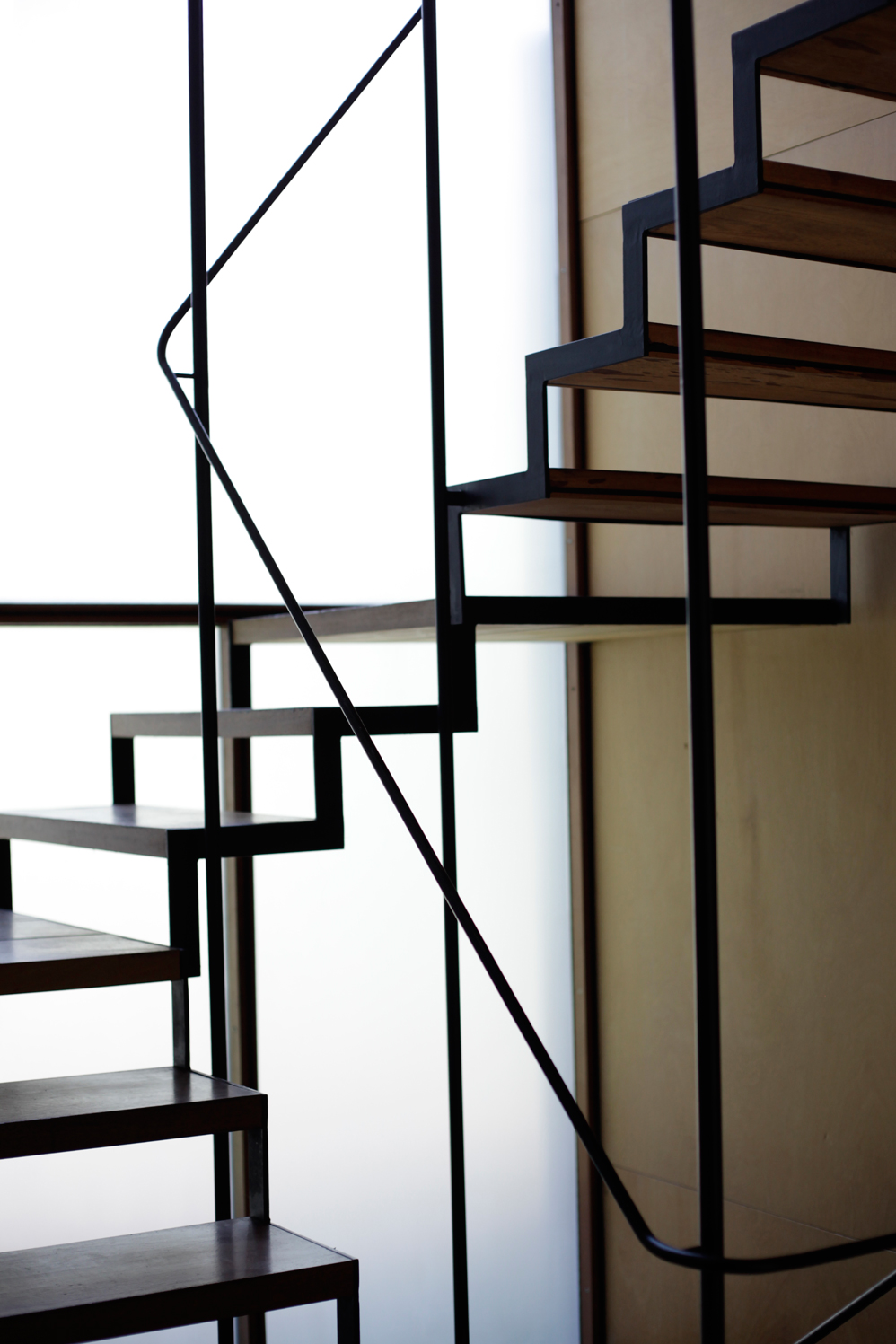
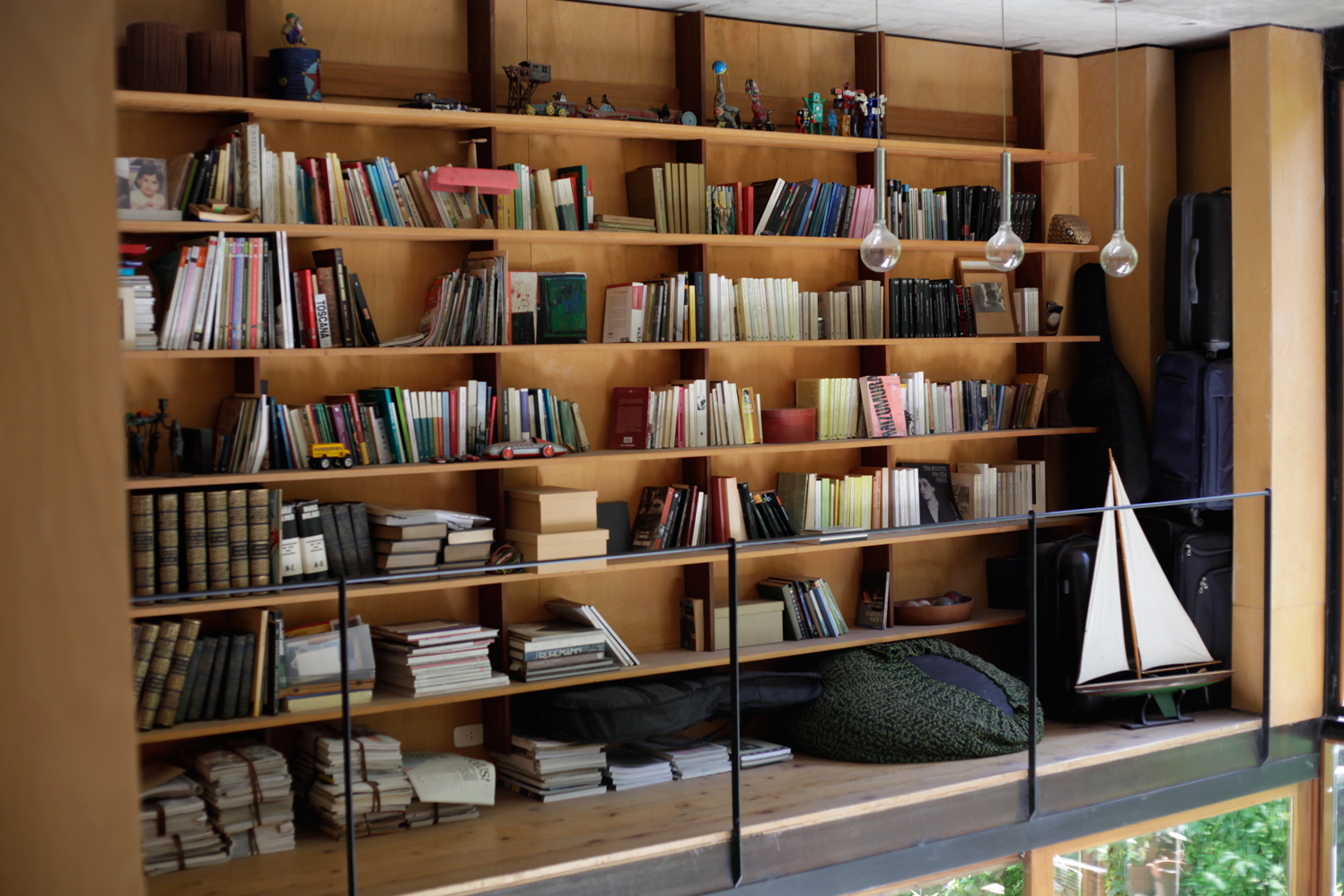
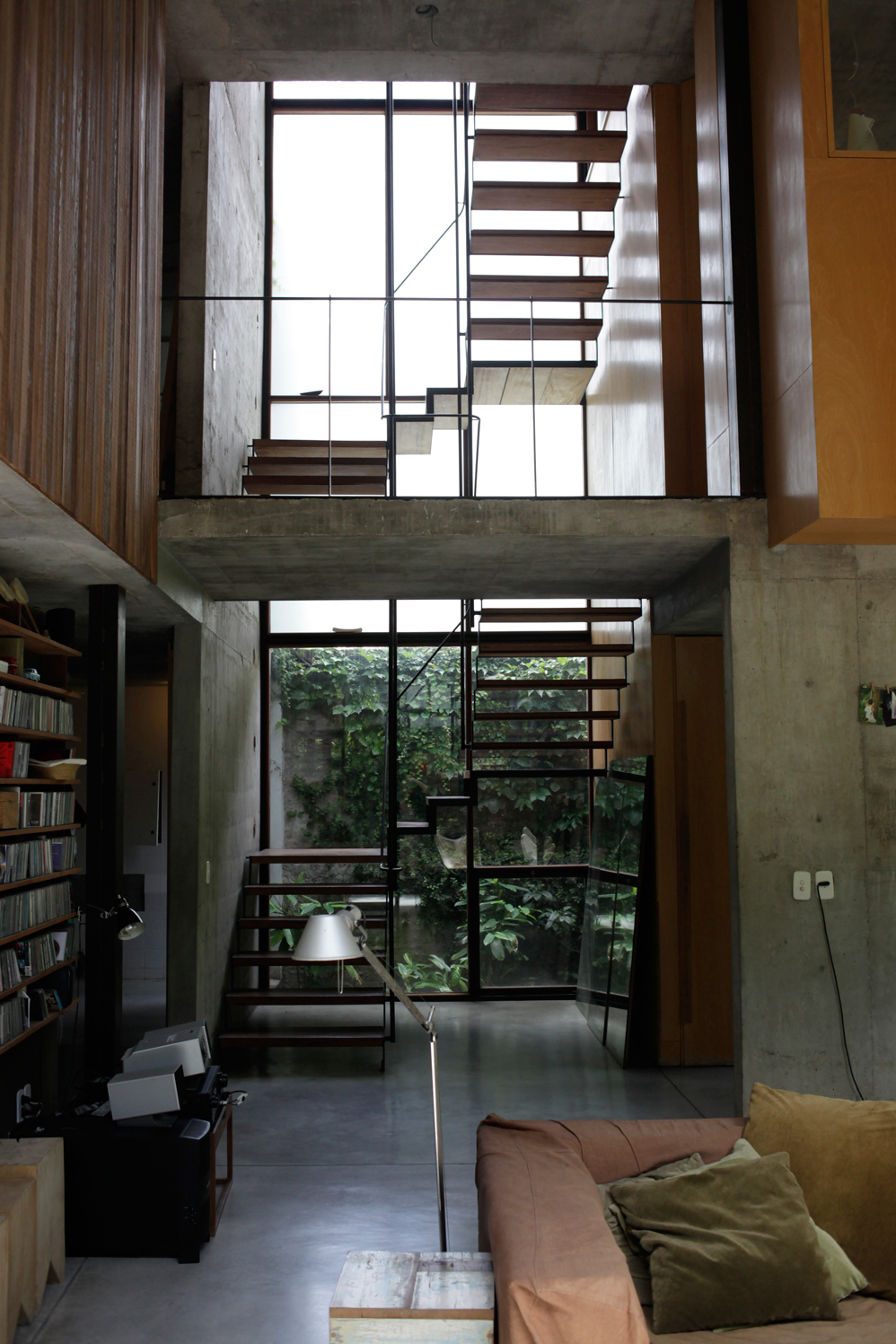
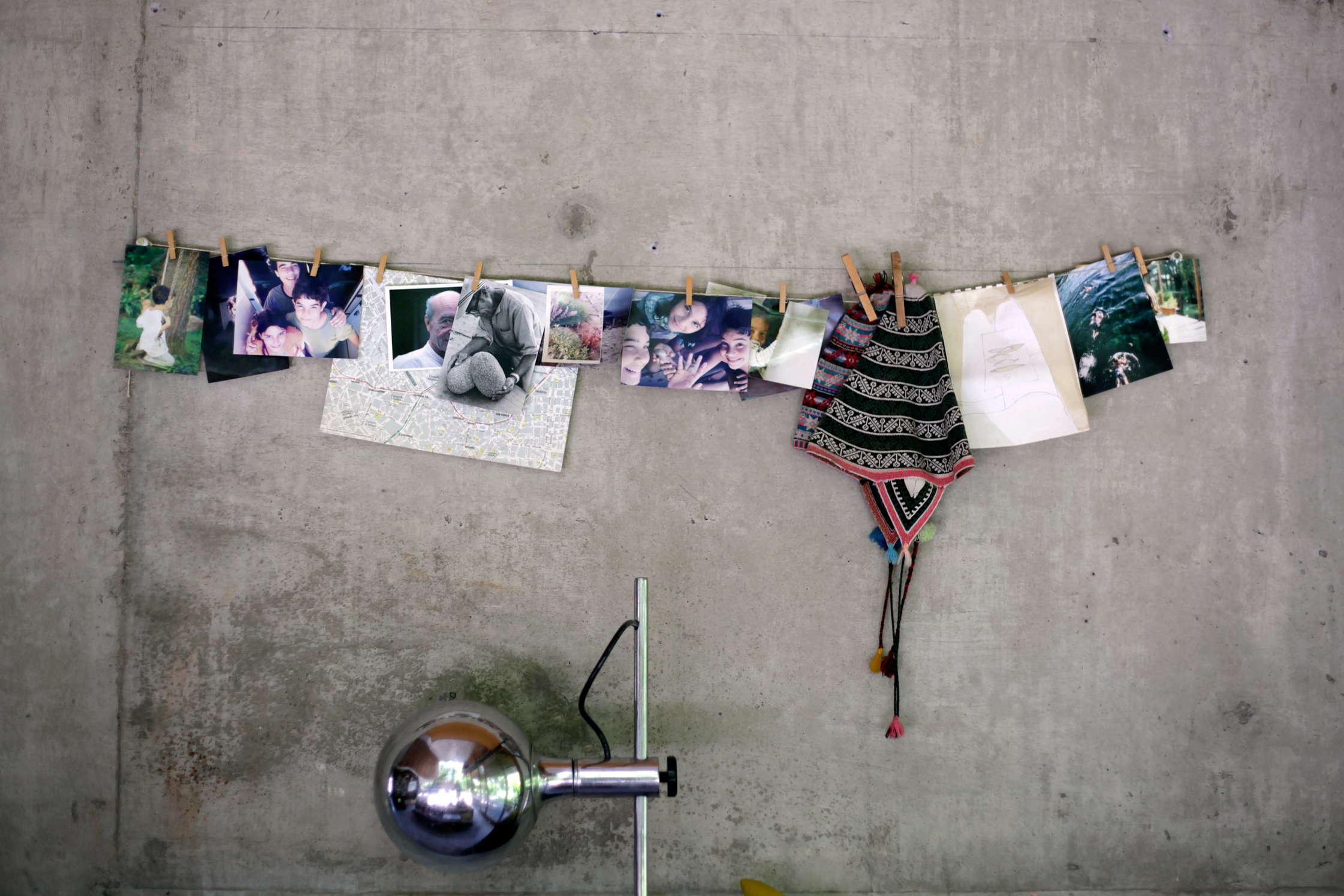
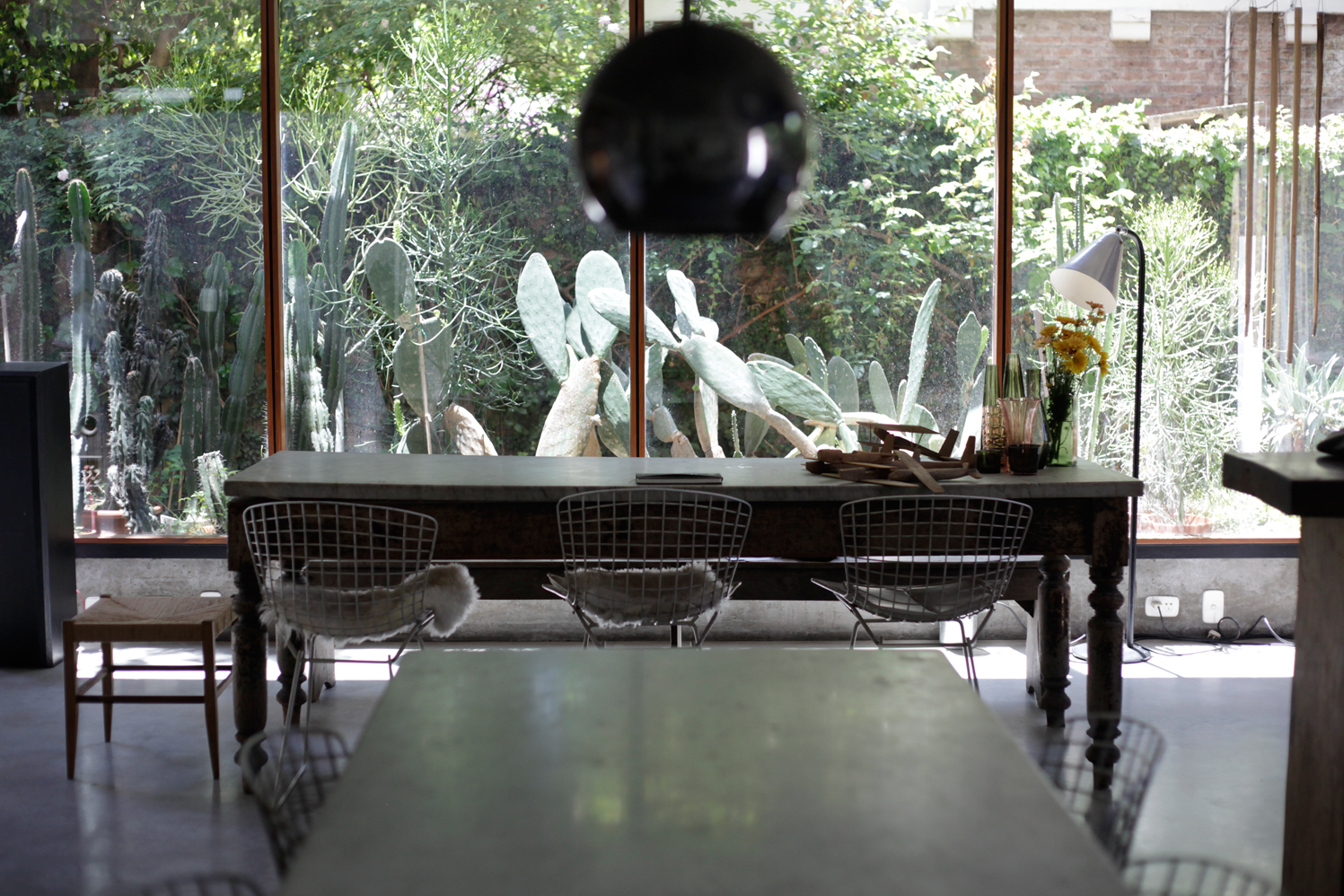
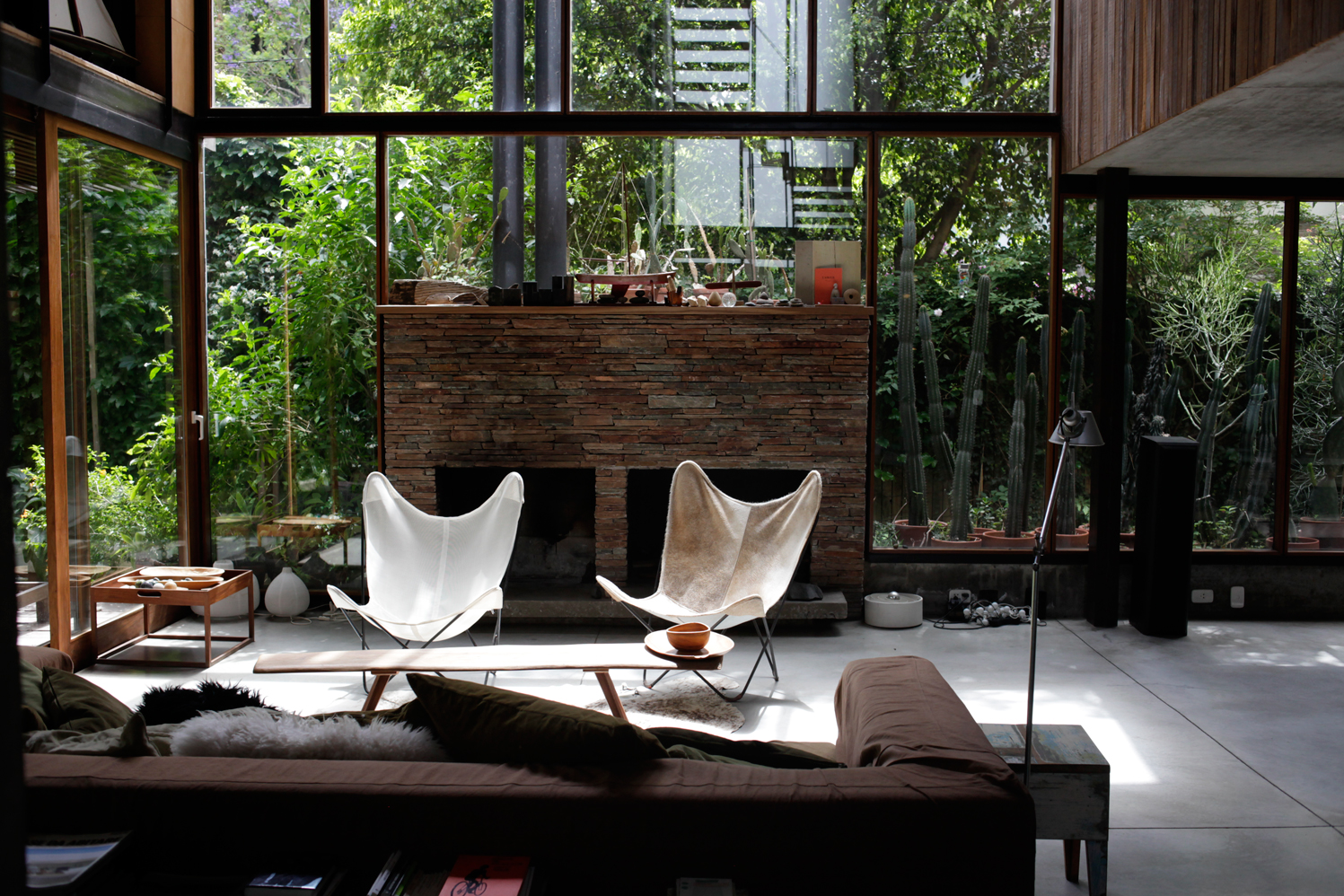

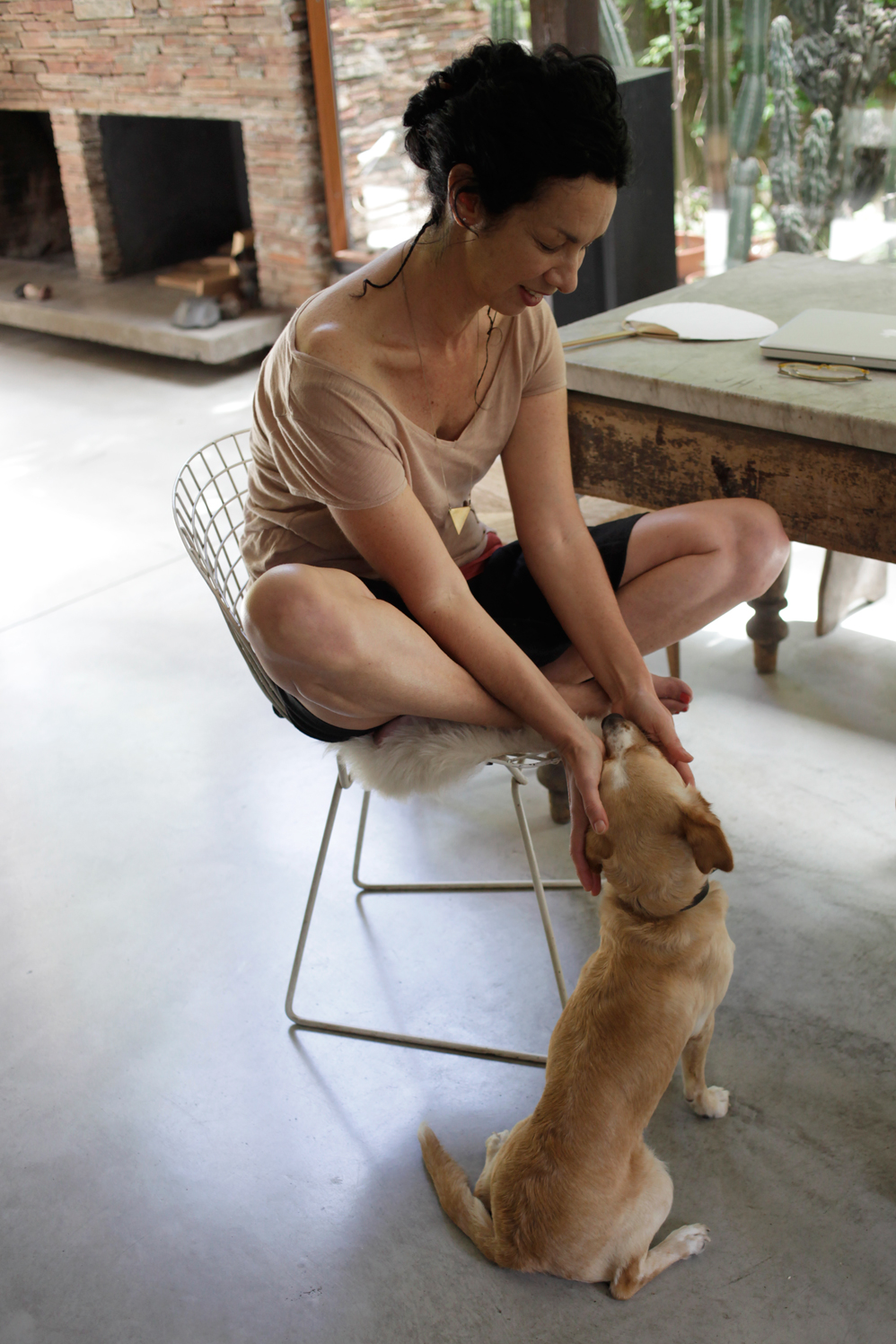
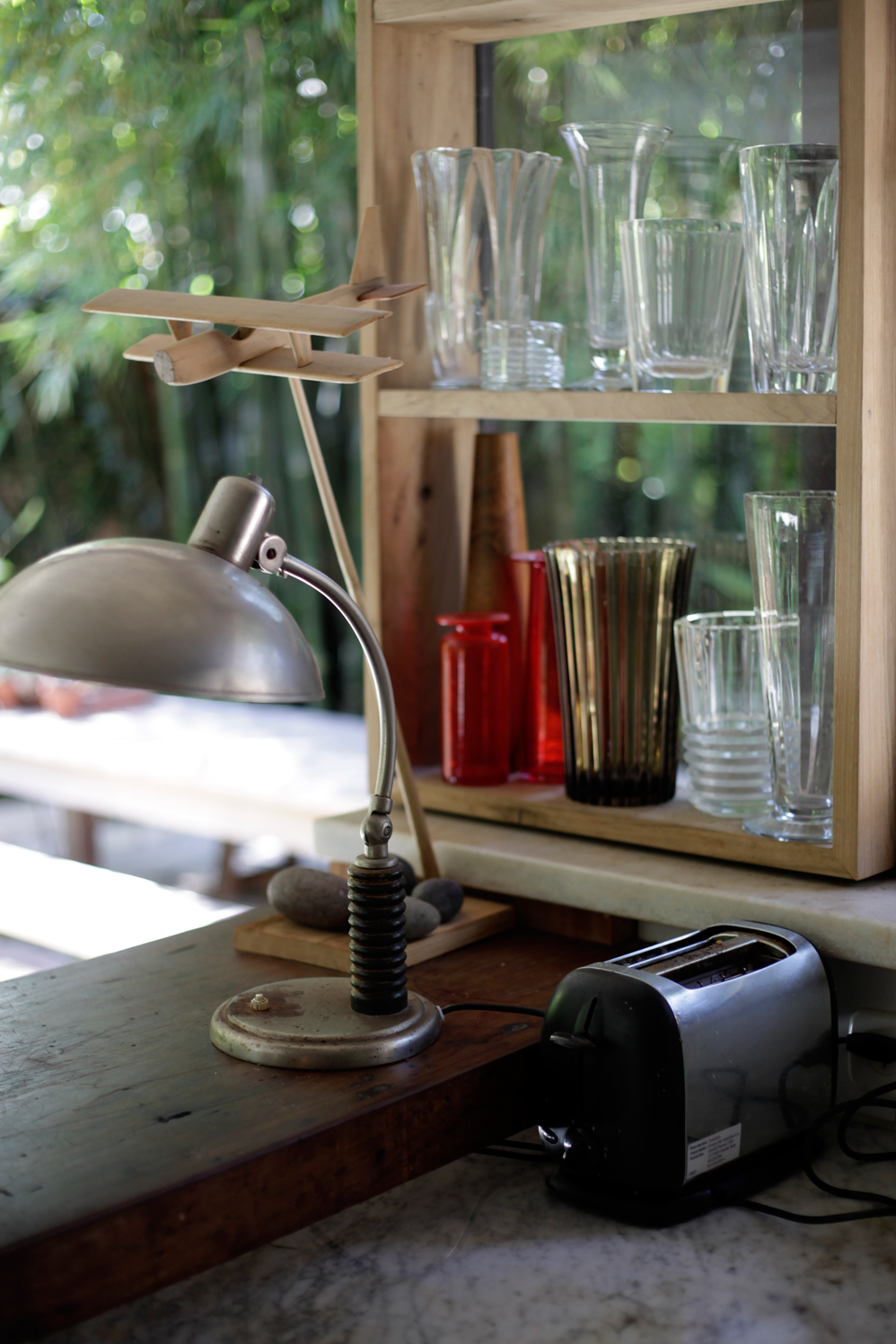
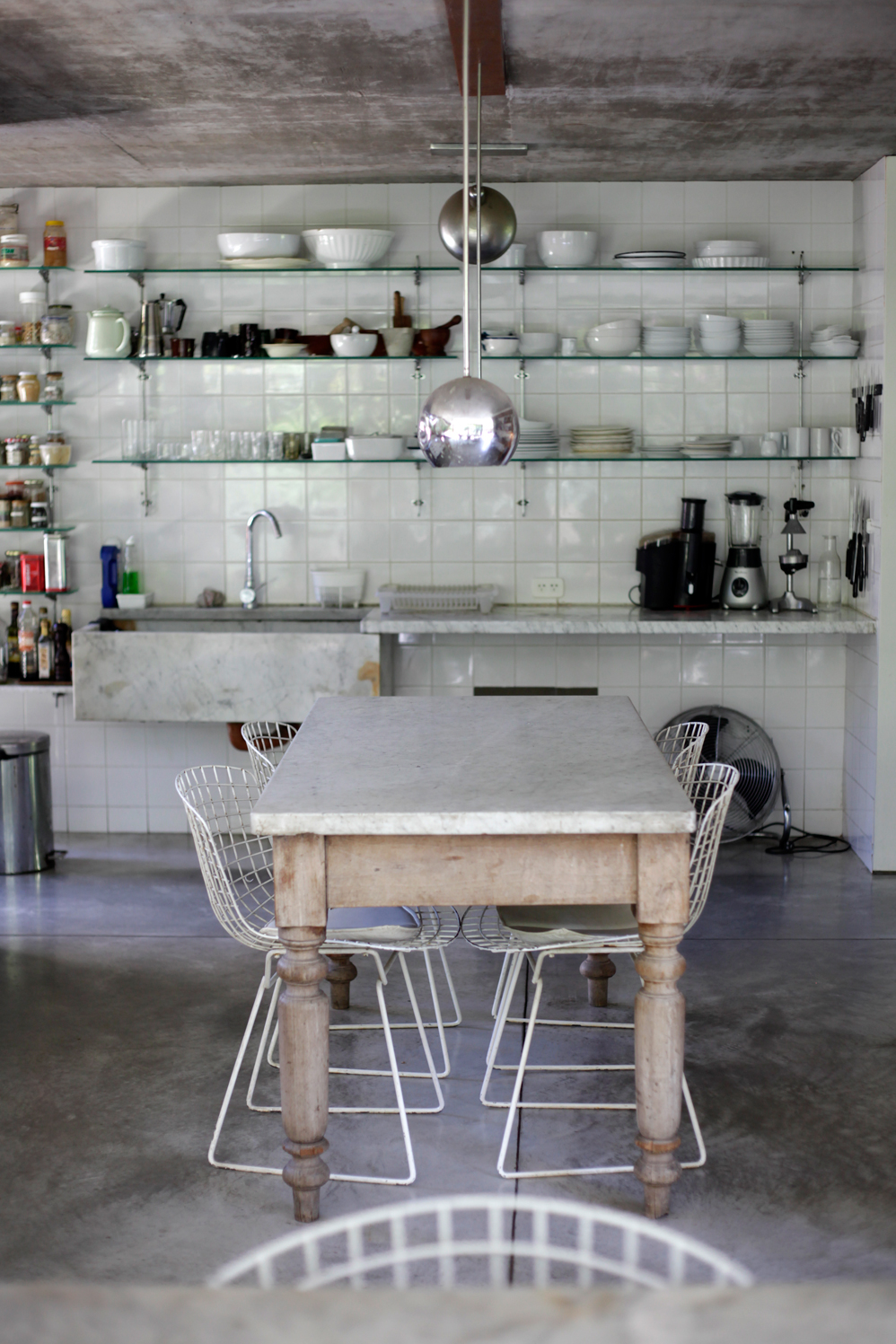
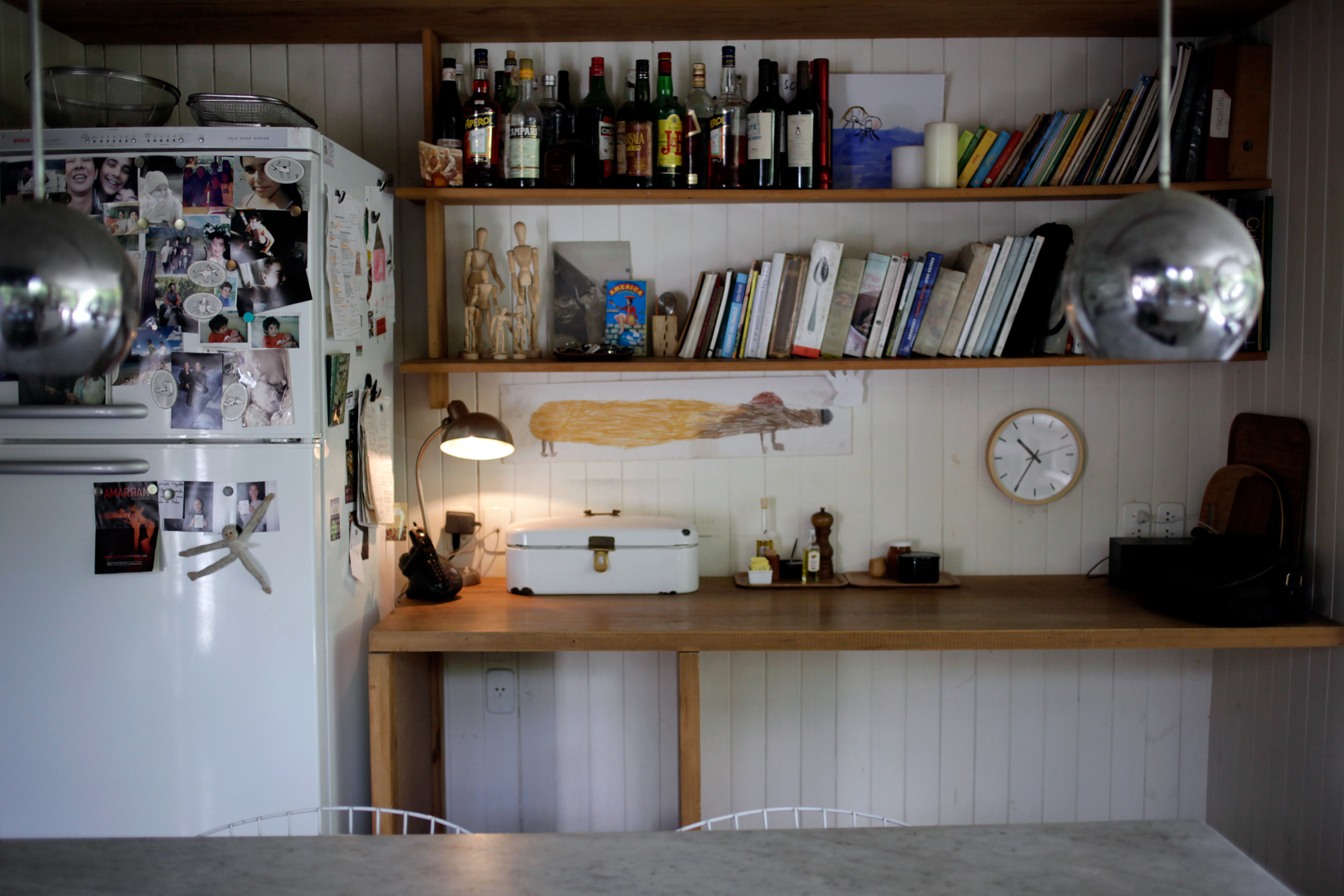
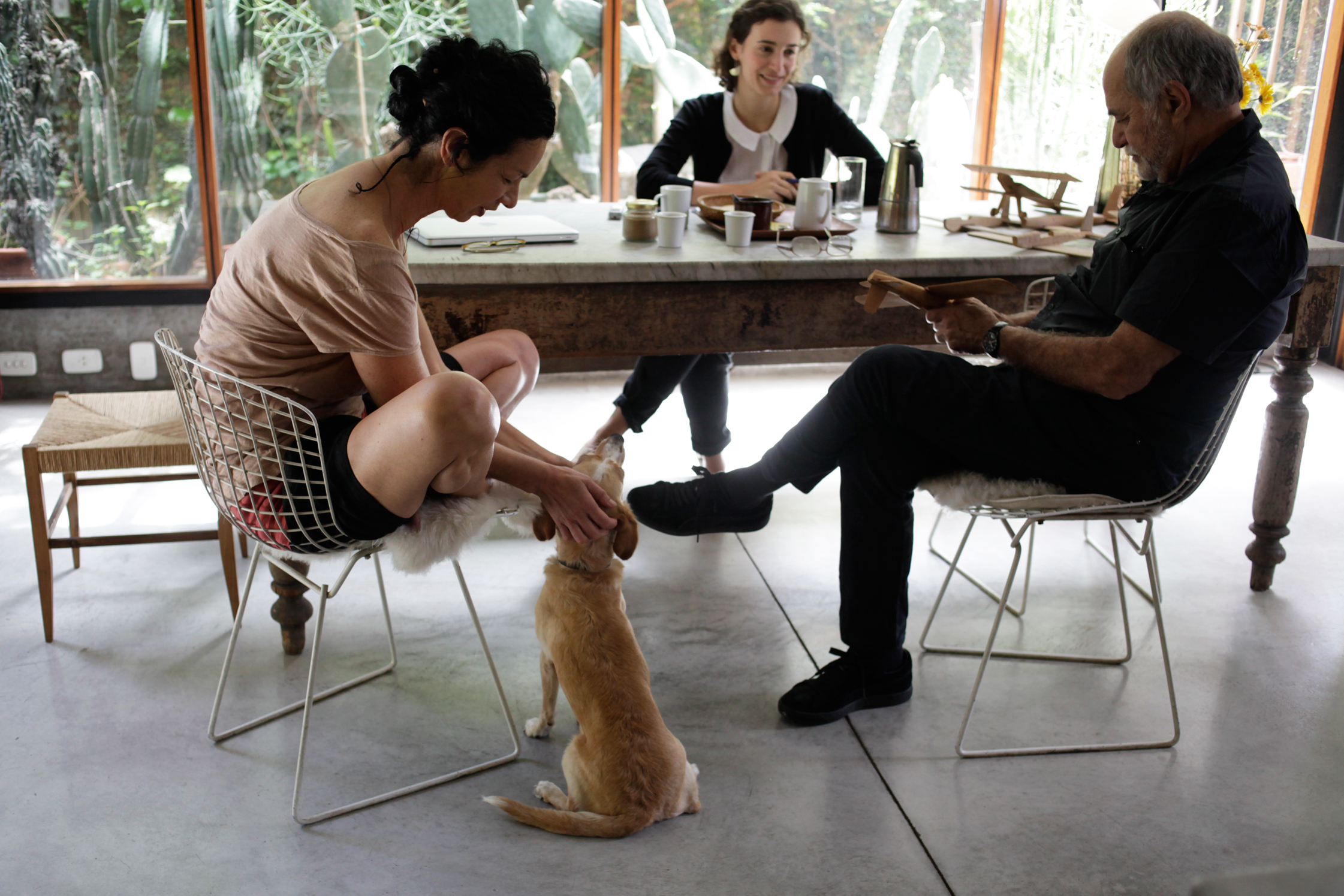
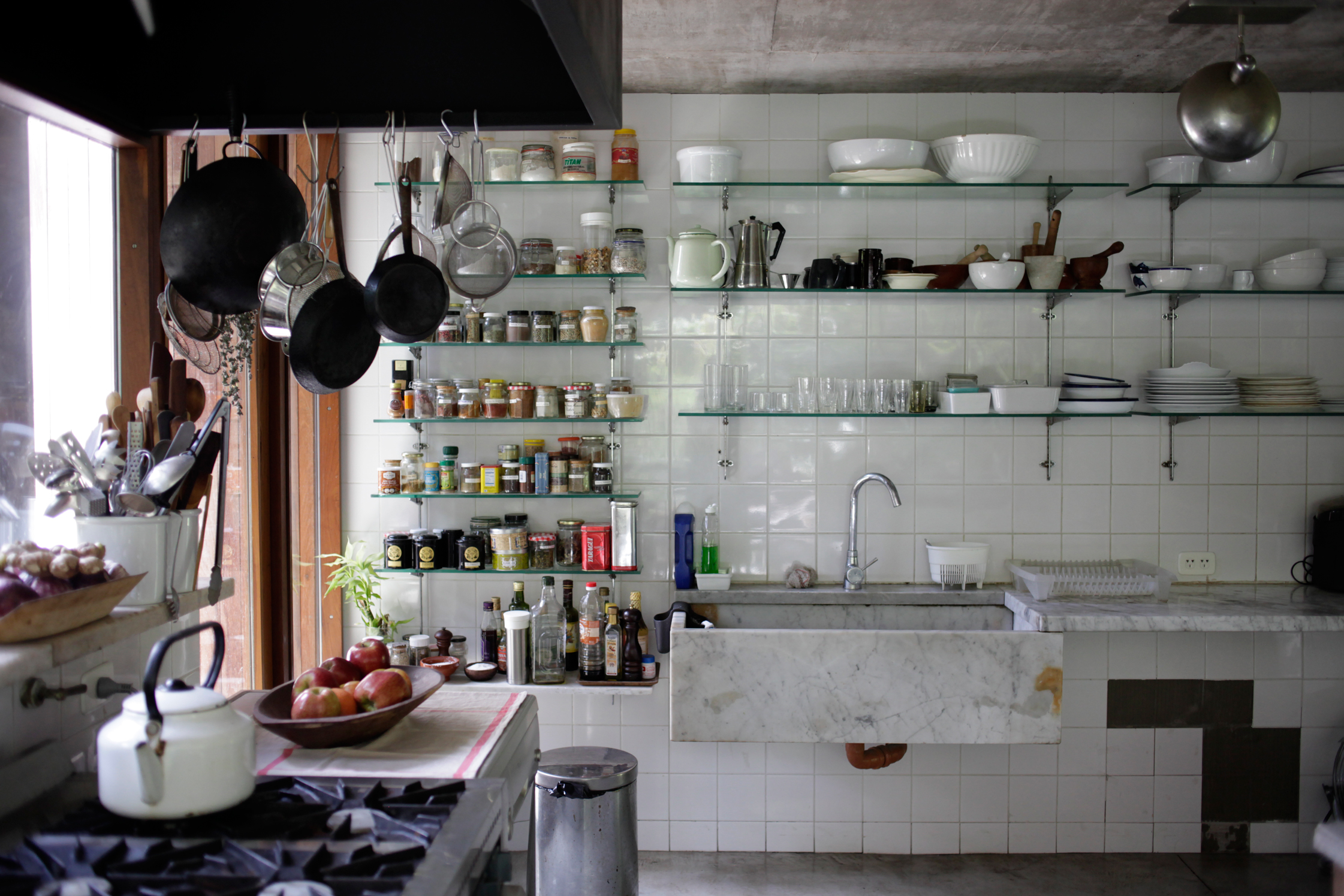
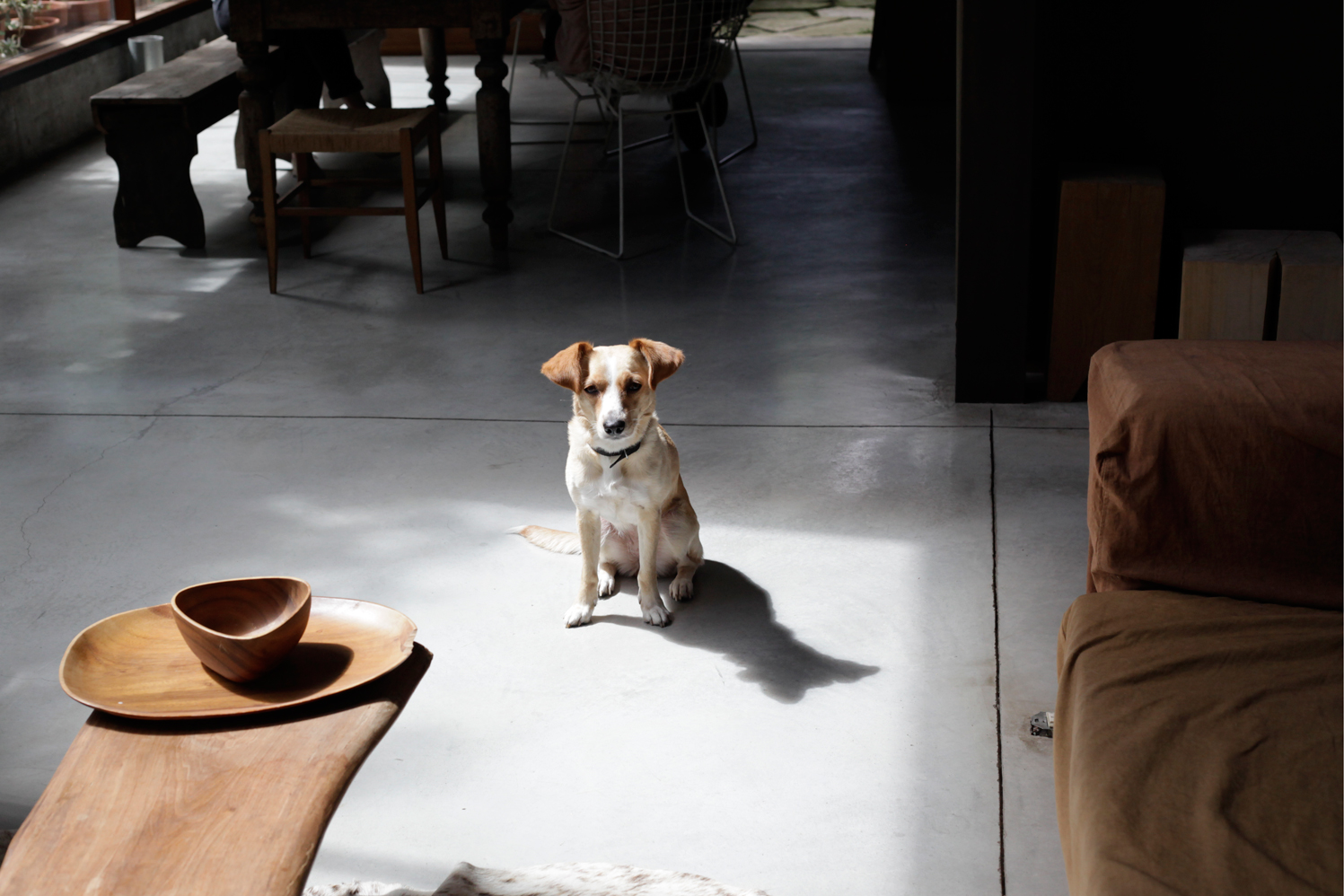
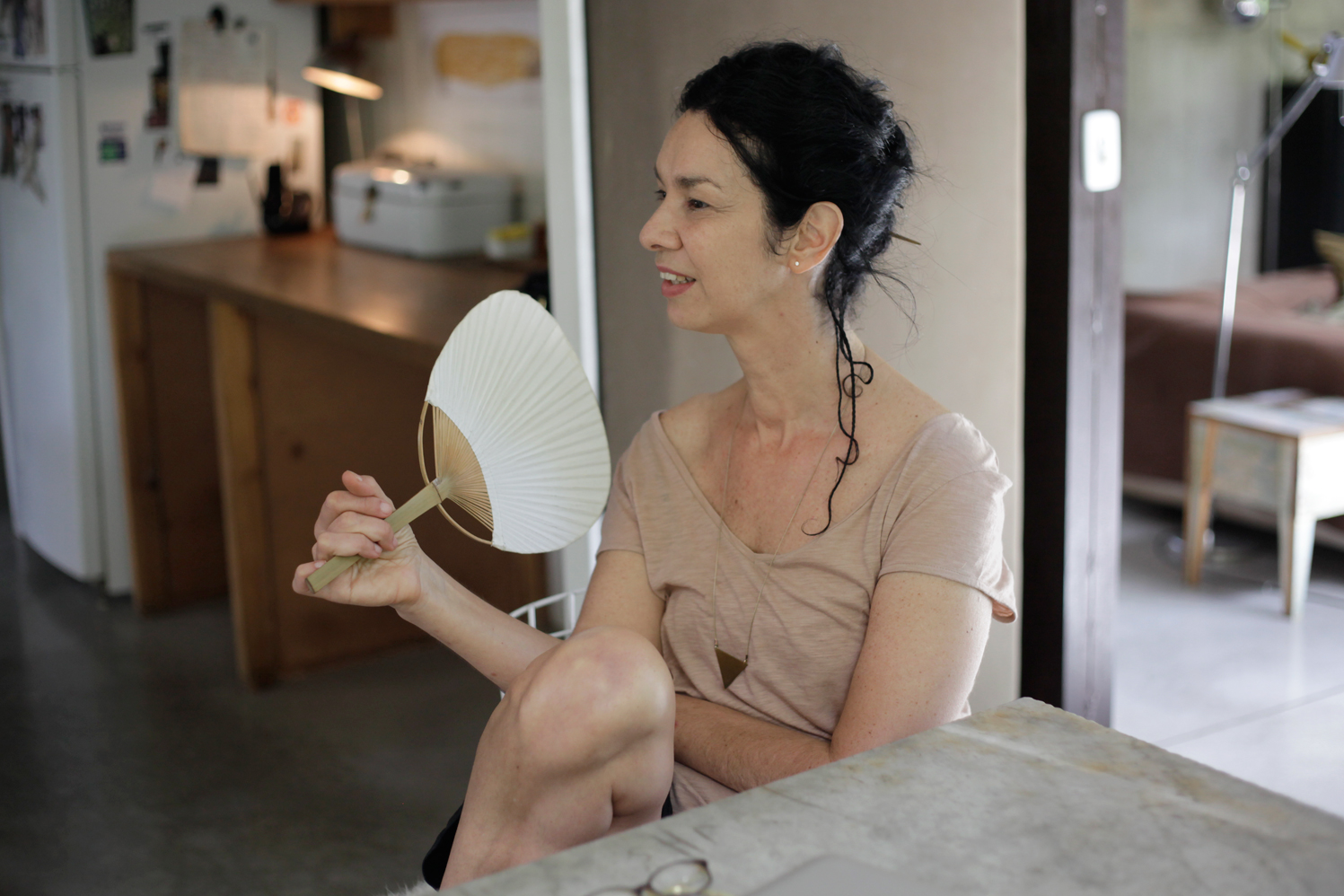
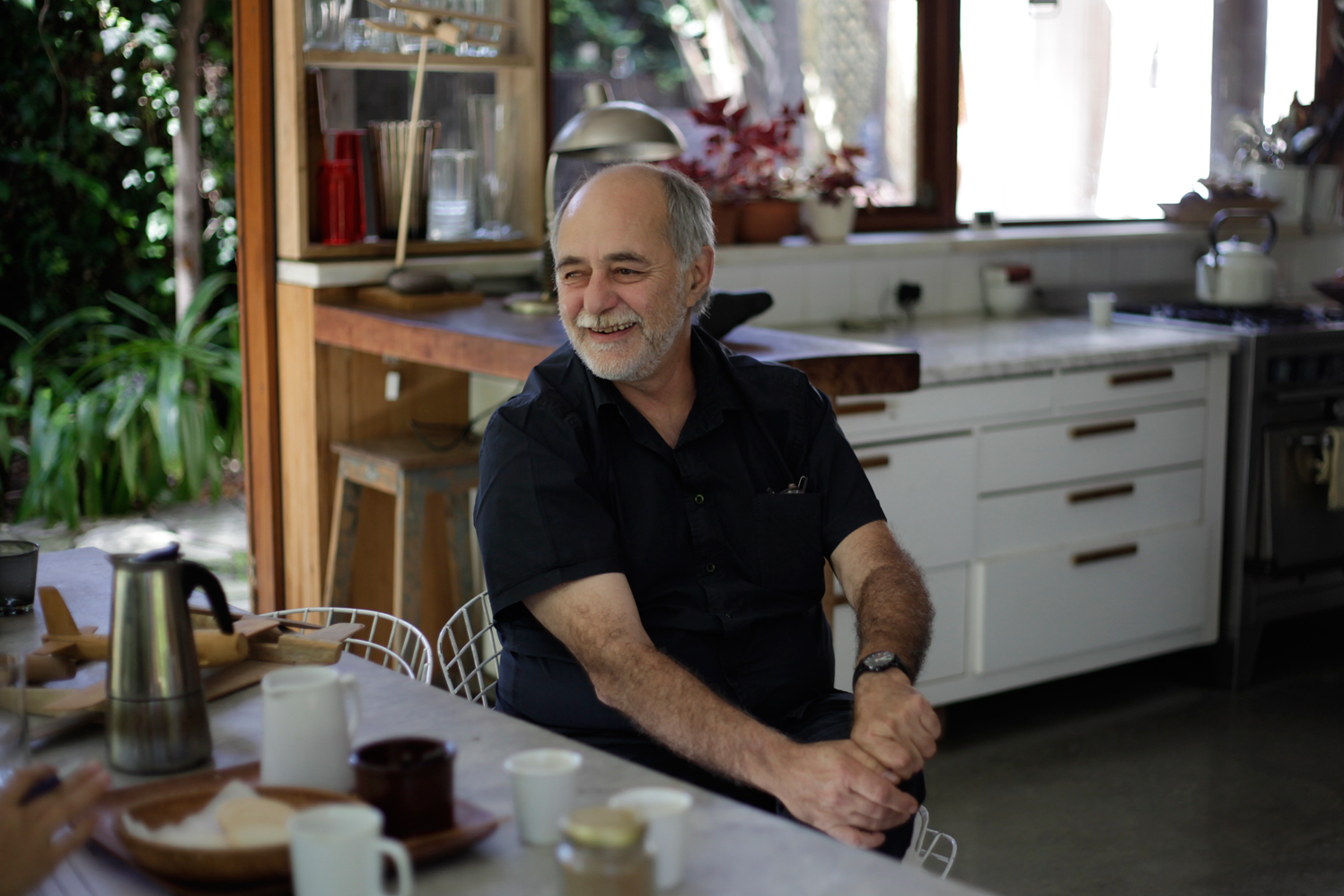
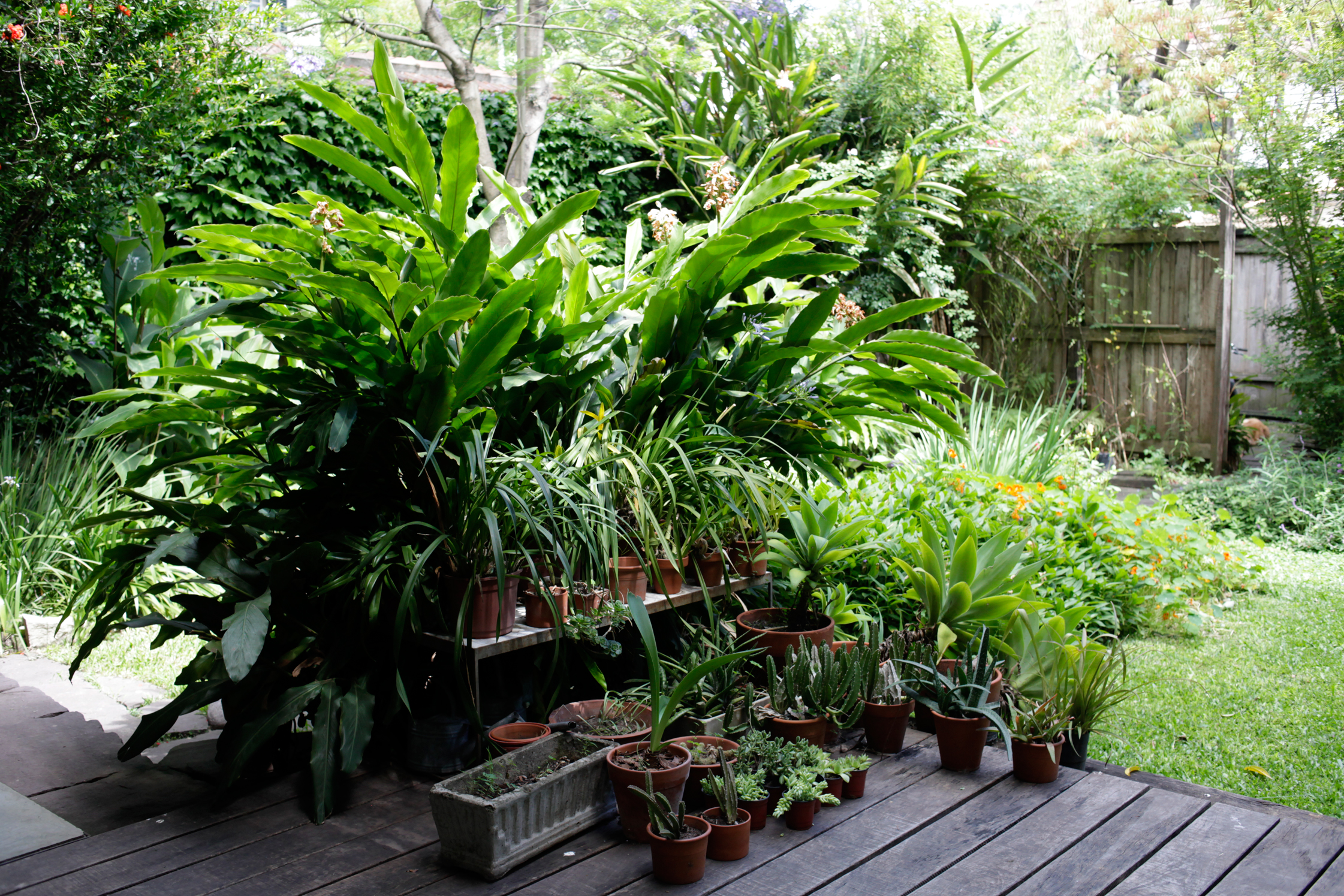
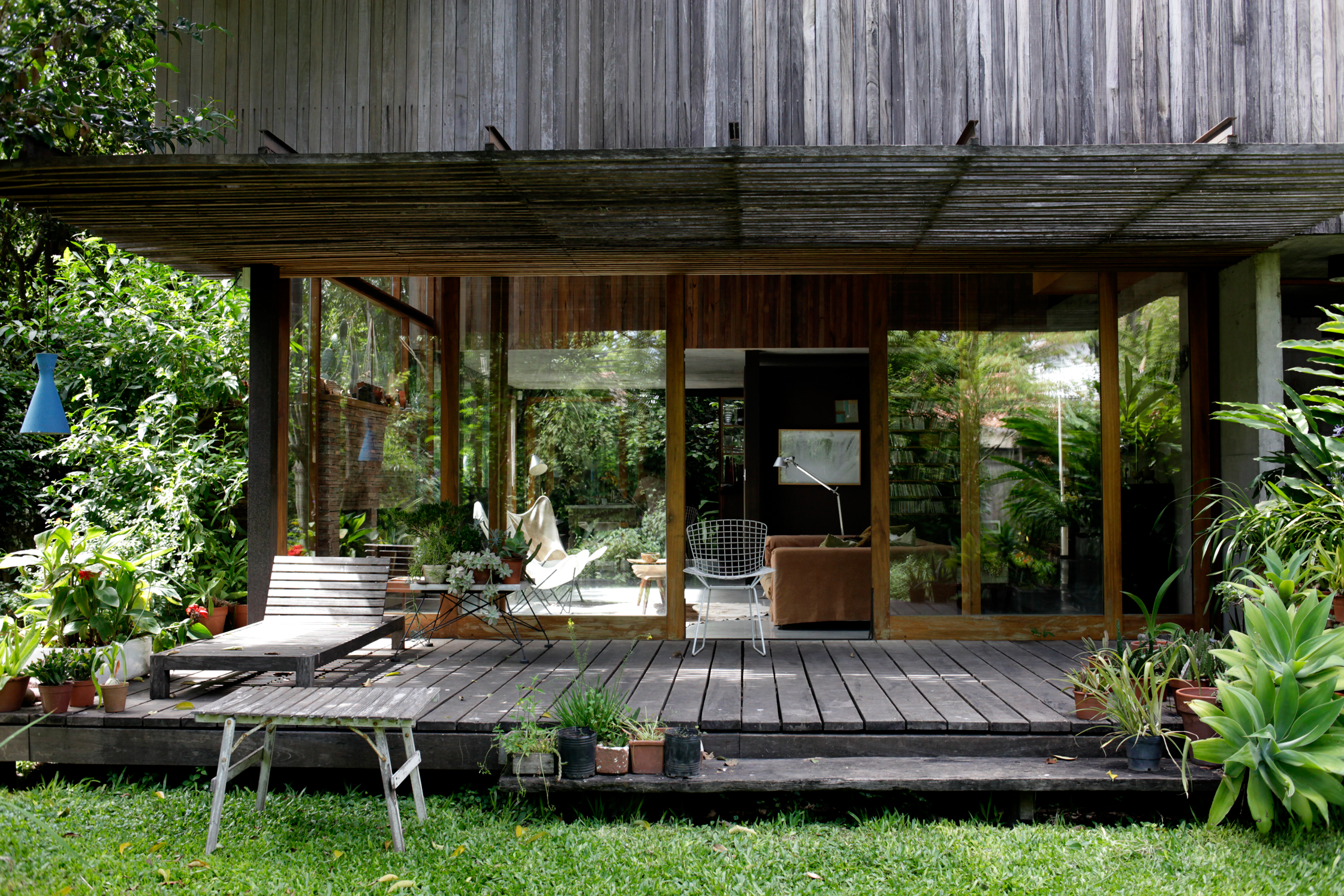
When and why did you decide to move to the Olivos neighbourhood? At what point in your life were you then?
Mercedes: It coincided with several things. First of all, when we met we were both married to other people. We fell in love and moved in together, but the houses we lived in were full of memories of our past lives.
Alejandro: We were living in a very beautiful house in Palermo, but the neighbourhood became more violent and we really wanted more greenery. It coincided with the 2001 crisis, and we had the chance to sell the house we were living in. It wasn’t easy to have money in your hand during that particular time in Argentina. We were looking for a new place for a year and a half, and in the meantime we moved to my parent’s country house in Pacheco, far away, together with the kids.
Mercedes: This used to be a garden between two houses. We first came here to look at one of the neighbouring houses, but luckily we didn’t have enough money to buy it. When Ale saw the garden, he asked “and what about this?” and they said it was for sale, too. So we bought it, and spent three years building the house.
Alejandro: Well, no, three years passed from finding the property to finally moving in. Between the project, constructing, and getting part of the money… We ran out of money during the process.
Mercedes: It was also a time of reconstruction for the country. Building our life together coincided with the rebuilding of the country post-crisis. With all the difficulties that it involved, and with all the desire and the pride of doing it from here. It was a good time to bet on personal projects.
Alejandro: The crisis nurtured our project because opportunities began to arise that were hard to obtain before. The come-back of the Argentinean industry, the fact that people stopped using imports… At least we thought so, I don’t know if it really was like that, but small companies that had closed down during the past fifteen years reopened again. We were very enthusiastic and riding on that wave.
What was the experience of building your own house like?
Alejandro: It was incredible. Even more so because this is not a conventional home. Right now I could describe it best as an ‘alternative’ house. When you build your own house, you want to make sure it includes everything you like. In other projects that I had done before, I always met a certain limit as the client would disagree with my ideas. However, with this one I had the chance to fully convert my ideas into something factual. It was like getting a custom-made suit.
Mercedes: For me it was a foundational house. We caressed it, we desired it, and we imagined it. It was a complete flirt with the life that we wanted to live, at a time when Alejandro was very mature about his decisions.
I can imagine that having to decide on every detail, every material, every space forced you to reflect upon your priorities and tastes, to undergo a self-analysis of sorts?
Alejandro: It is something mechanical. As an architect I am used to thinking in regards to other people’s needs. In order to design something, I imagine people living inside it, so I just had to apply that process to myself.
Mercedes: We saw it as a big opportunity. This was the very first house that Ale created from scratch.
Alejandro: Well, I had built another one, but it was in the middle of the city. This one was the first that had an ideal site, a perfect placement. Everything was custom-made. I couldn’t just go to a store and say, “give me the windows,” as these windows didn’t exist on the market. I had to envision and draw them, and give it on to a blacksmith. Nothing was standard, nothing could be bought somewhere. The toilet and the tiles were the only things that we were able to find at the market and liked. Everything else had to be custom made. Since I own a carpentry workshop, I was constantly producing things for the house.
Mercedes: Once we put the pressure of moving behind us – we were living 25km away from our workplace, so coming and going was quite hard, especially having to bring the kids to school – the process marked us in a beautiful way. Each day we spend here feels like complete happiness. All those moments of struggle pay off now with guilt-free enjoyment.
Architecturally and stylewise, your house stands out within a neighbourhood full of a classical, English style houses. How did the nearby residents receive your arrival?
Alejandro: They received us well, but we’re still the modern ones. The house is positioned in a way that it throws the least amount of shadow on the surrounding houses. We didn’t wish to offend or invade with our new presence. Even though it was not something anybody asked of us, it was a logical matter of respect. Regardless, the style was very different and people would stop in front of it and stare at the house. It still keeps happening.
How is life here in Olivos, compared to living in the centre?
Alejandro: It is wonderful to arrive here and see the garden, the trees, the birds. This place seems even greener than the neighbourhood actually is, and since the house has a lot of windows in the ground floor, the garden almost gets inside. We like plants very much and work a lot in the garden during weekends. We don’t have a gardener so we do all the work ourselves. We’ve both always had a lot of potted plants in the places we’ve lived in, and over the years we took them with us when we moved.
Mercedes: Books and plants are always the first things we pack.
The fact that you live in a custom made house full of self designed furniture reminds me of the iconic Eames – do you two collaborate on any projects, as they used to do?
Mercedes: We collaborate invisibly. We tell each other things and we trust each other aesthetically. We have a large amount of potential joint projects, but not in an exposed way, it’s not like we say “let’s design this or that together.” But I show him things that I notice all the time and vice versa. We send each other links, we take pictures, we observe each other with the other’s perspective. We trust each other. That is a collaboration.
Let’s talk a bit about Buenos Aires – if you had to describe the city to someone that has never been here, what you would tell them?
Mercedes: I think the city’s “human capital” is its most remarkable attribute. There are many curious people here and there is still a lot of space to create new projects. Being far away from the central countries, Buenos Aires is a pulsating place with a will to construct and create. It is very multifaceted, and there are lots of different cultures that all have their own markets, fairs, and neighbourhoods. We are a very new country that has basically been built – well, not built, but let’s say that more than 80 percent of the population are immigrants or come from an immigrant heritage. It possesses a rich ethnic and cultural complexity, which is visible all over the city.
Both your businesses, Mono and Net, are located within the popular neighbourhood of Palermo. How has it changed since you settled there almost fifteen years ago?
Alejandro: Palermo is a shopping centre now. Before this commercial phenomenon started, we already had property there. We liked living there precisely because it was a much more shabby neighbourhood.
Mercedes: It was full of small businesses, progressive and creative people. It was cheaper and quite alternative.
Alejandro: There were no shopping centres back then, that all started in the 90s. First a lot of people started moving to this area because it was inexpensive. After that, the big brands realised that they needed to be present within that area as well, just because that’s what the rules of marketing dictated. I have been designing shops for various brands for a while now, so I am aware that the brand’s reasoning was that renting something that would be extraordinarily expensive for us, was actually very affordable to them. It compared to having a gigantic billboard along a big avenue for which they would pay about 60,000 dollars a month. For a brand, it cost the same to rent a house in Palermo, destroy it and turn it into a shop. It is the law of the market. Eventually, when the real estate companies had triplicated the prices, they changed the neighborhood’s name and created zones like Palermo “Soho” and Palermo “Hollywood.”
Mercedes: What was most interesting about Palermo at the time was its mixture of housing, shops and small ventures. It had a lot of urban benefits and generated a very beautiful everyday life with its plazas, schools. It was a real neighbourhood.
Mercedes, it struck me that several people refer to you as some sort of ‘fairy godmother’, as someone they look up to and consider almost a mother figure. What meaning does implicating young designers within your projects and supporting them in their professional development have for you?
Mercedes: The beauty about my work is exactly that. Being able to discover and surround myself with talented people and give them visibility. My job has a lot to do with sharing and networking in order to encourage gatherings and new projects. To engage and motivate people who I like, who share my point of view, who may have a new form of creative expression or an approach to life that I agree with. That’s what brings magic to our lives, proposing things, bringing people together, giving. It’s something that nurtures the soul and life in general.
Where did the idea of creating your own collection of notebooks come from? And what’s the story behind their decidedly vintage aesthetic?
Mercedes: The idea for the notebooks originated from the fact that I have always thought with pen and paper in hand. During my travels I had discovered similar kinds of notebooks, and as a graphic designer I wanted them to be available in Buenos Aires, too. In 2001, when everything broke down, I had that idea and created several prototypes with different sizes. One day I stumbled upon this amazing bookbinder that had an old factory with beautiful machines, and with great knowledge of one of those traditional handicrafts that had been forgotten and wiped out by capitalism. He was a very special person, and since his factory had never been modernised. They still used many old bookbinding techniques. Parallel to that, I discovered a very old wallpaper factory with a gigantic storehouse. It was a dark and humid place, filled with thousands of old wallpapers. So one day I put on my work clothes, grabbed a flashlight and decided to go in there to make a first selection. That’s how the first collection of papers originated, and subsequently my very first line of notebooks. I loved being able to bring an idea to life. My goal was to create a space without any writing or drawing on it, a blank page that could be filled with the thoughts and ideas of the person that bought it.
How do the collaborations you encourage, reflect within your own work? Does being among so many different kinds of designers impact your own point of view?
Mercedes: Absolutely. I love allowing these things to happen. It is like embroidering, knitting, or drawing together: one learns from one’s own gaze, but also from the view of the person next to you, showing them your own perspective in return. That synergy got lost within urbanity, in the neo-liberal and capitalist system where the only thing that matters is work. I have the feeling that recuperating collaborative space is something alternative at this very moment in life and society. In the cities and urban spaces that we live in all of this gets pushed aside, even though in other cultures it’s still an integral part of the social fabric. Being able to bring collaboration back in a creative surrounding makes life a bit more beautiful. My project Mapas de Buenos Aires talks about something similar, in the sense that it tries to narrate a Buenos Aires where interesting and alternative initiatives exist. It’s like taking a picture of the city, some people will choose to depict tango, meat and wine, and others will try to show a different world, one that isn’t that visible, and this is what fascinates me. It is very enriching. Receiving feedback from this other world creates a desire to keep producing things.
Talking about Mapas de Buenos Aires, tell us the idea behind these small city guides that have become an essential travel companion for many visitors.
Mercedes: I love reading maps. They have always fascinated me and I own a large collection of them. I believe it is key to have a map with you when arriving at a new city, and being able to locate the right information. The creation of the first map had to do with the growth of a particular neighbourhood that I loved, combined with my travels and the need for a tool that would help locate secret worlds that are not visible to the normal visitor. The project was initiated when internet didn’t exist yet. At first, it revolved around the Palermo neighbourhood, which didn’t have one specific centre and instead had many little streets with similar names. This made it necessary to have a map of your very own city. Besides that, new projects were coming up constantly, then quieting down and reappearing again six months later. It was an ever growing neighbourhood that deserved someone who talked about it.
Over the years, the radius covered by your maps has grown a lot. Now they include several neighbourhoods and get renewed every six months. How do you envision the project’s future?
Mercedes: Currently I am thinking about creating more maps, not regarding other neighbourhoods but other types of projects. I want to get away from the idea of the territorial, the geographical, and map valuable projects regardless of where they are located. The idea is to leave the division by neighbourhoods behind and search for those things that are really worth telling. I am interested in the editorial world, in the musical world; in individuals who create something with passion and care. My heart longs for projects that have talented, hardworking, passionate people behind them. I strive to find those individuals that have not been brought to daylight yet, but embody enormous potential.
Mercedes and Alejandro, thank you very much for inviting us into your home and for sharing your projects and your vision with us. If you want to know more about Alejandro’s work, you can visit his website NET Muebles here. See what Mercedes has been up to in her studio look at the Mono Block website here. If you’re considering a trip to Buenos Aires, don’t miss the Mapas de Buenos Aires.
This portrait is part of our ongoing collaboration with ZEIT Online who presents a special curation of our pictures on their site. Have a look here.
Photography: Ana Armendariz
Interview & Text: Julia Keller
